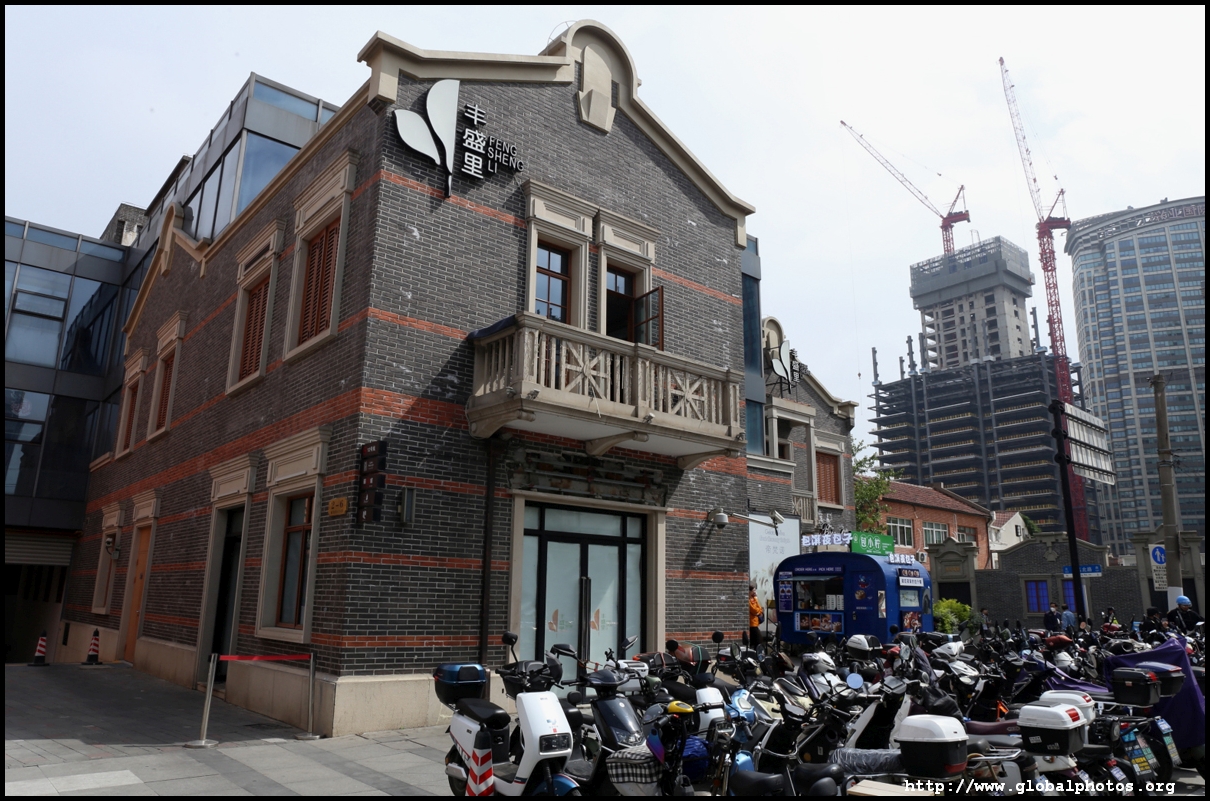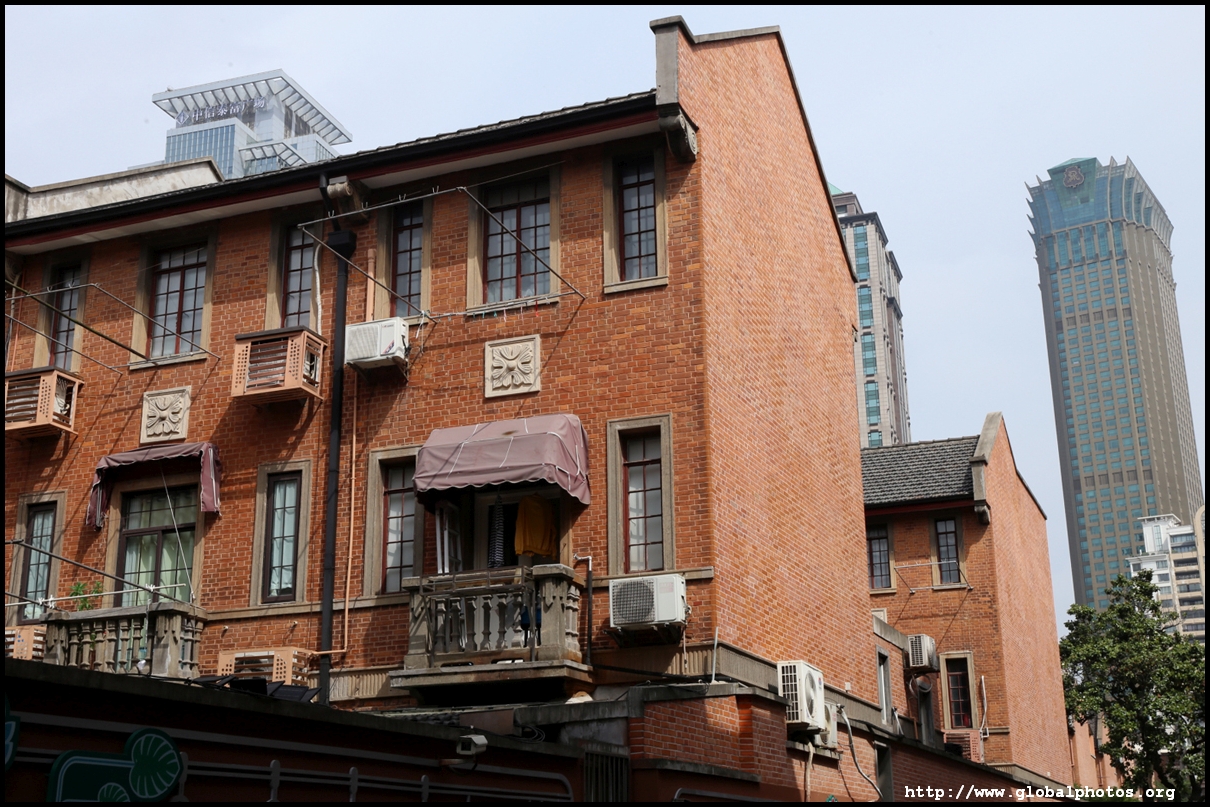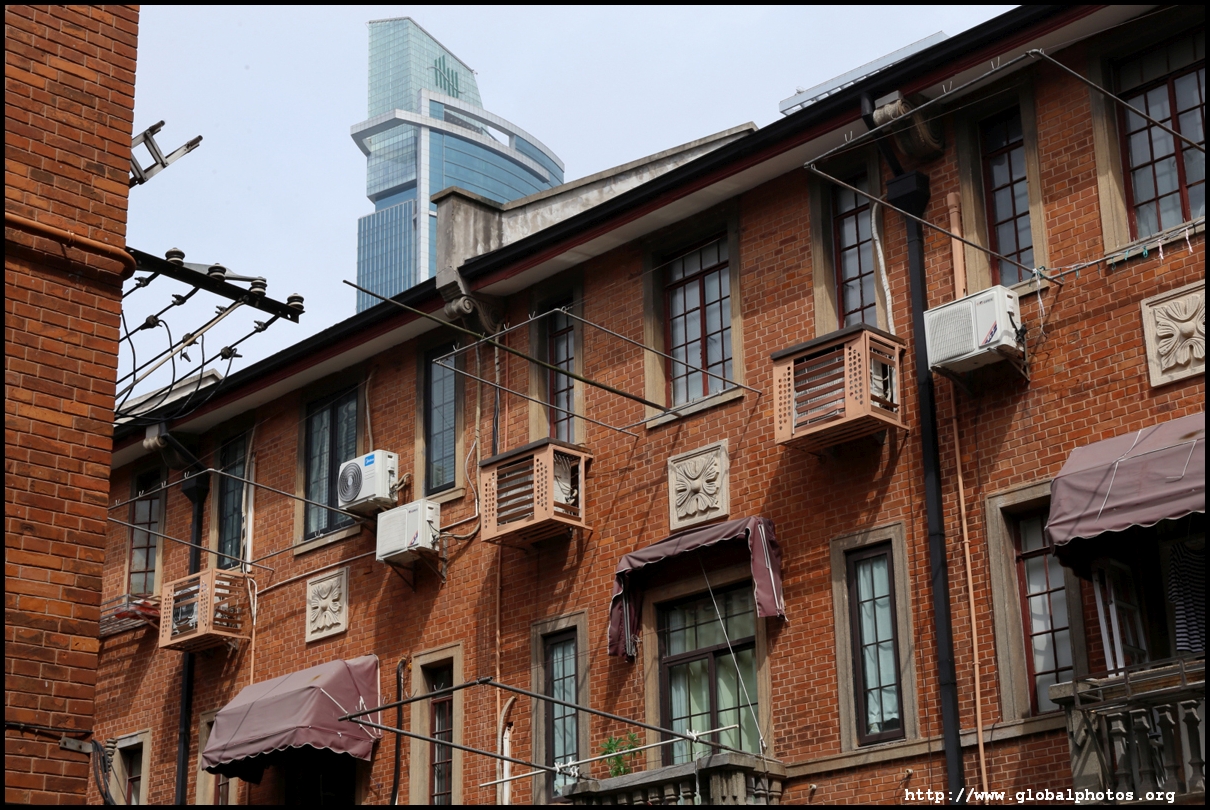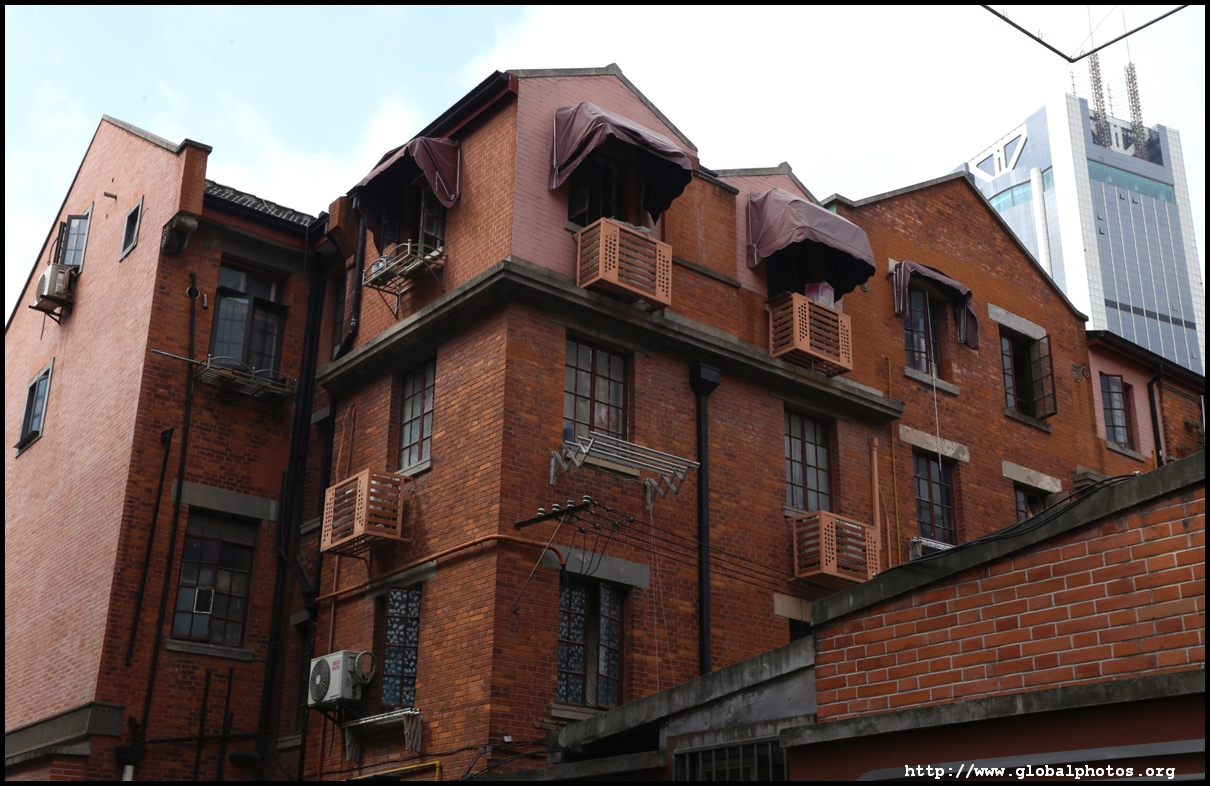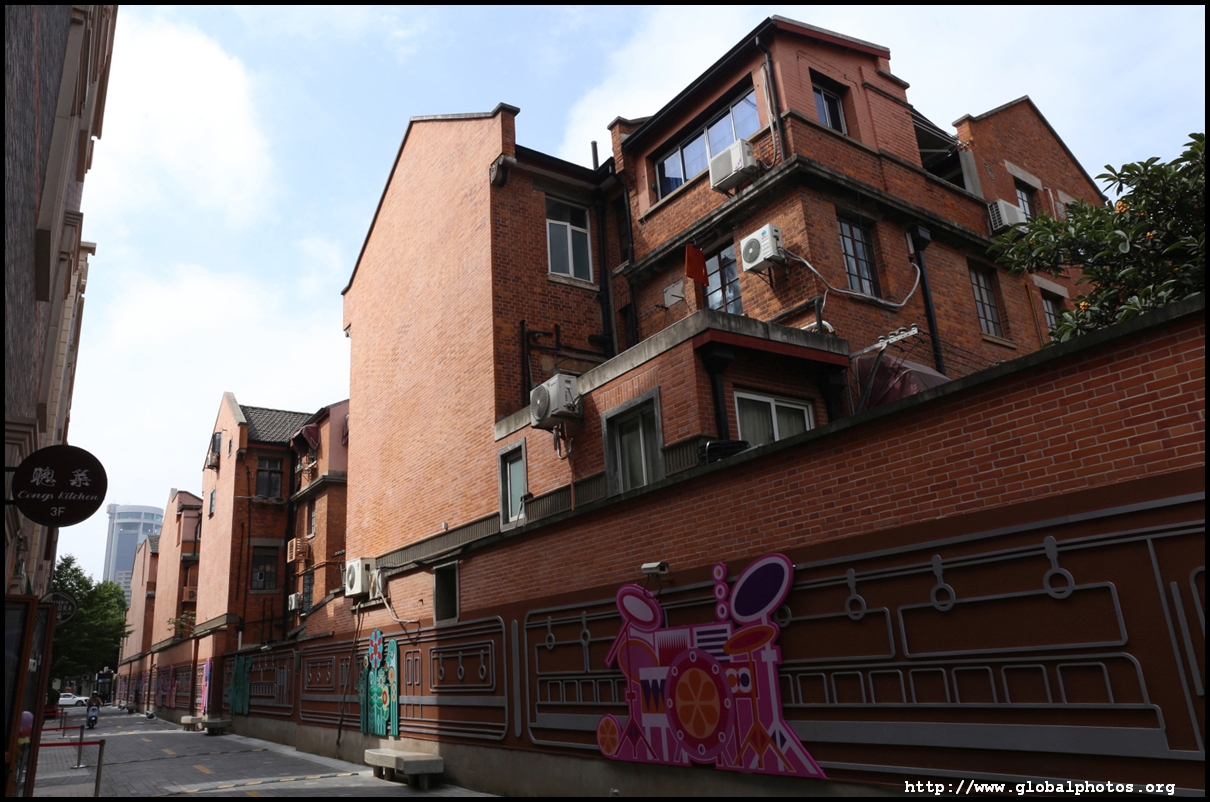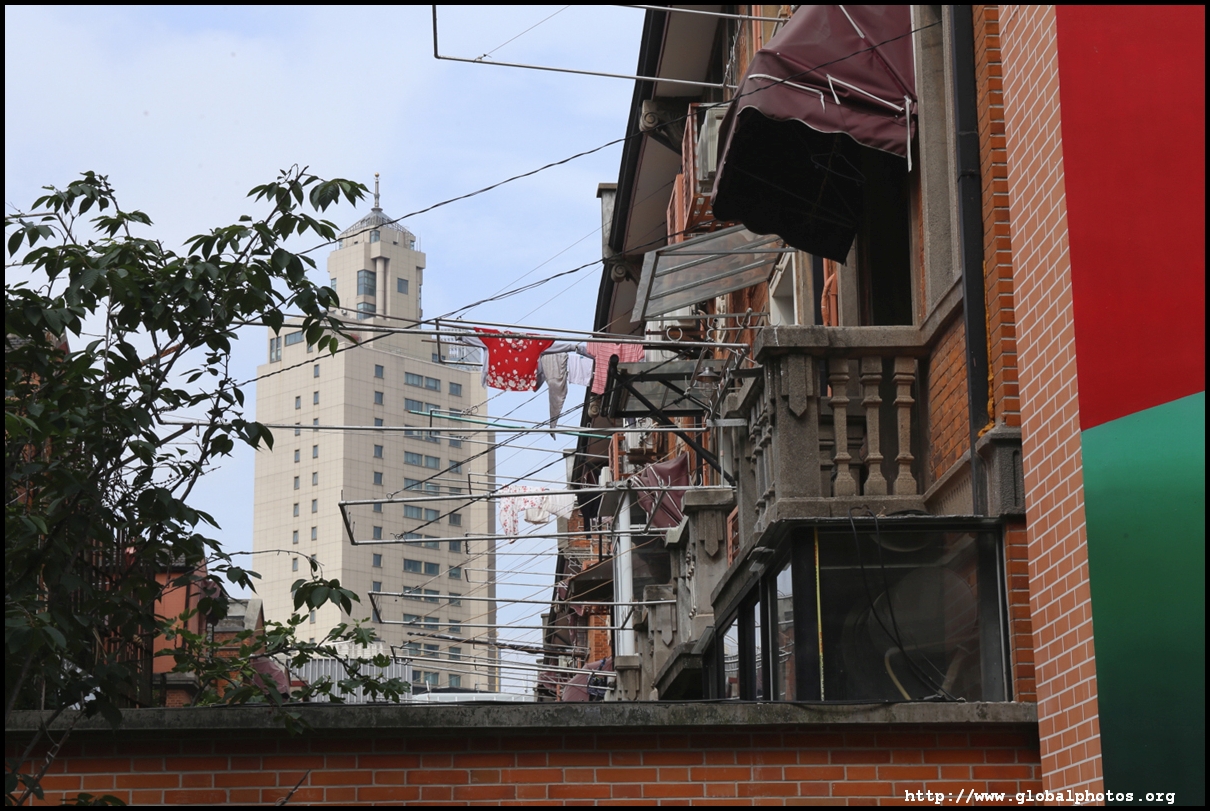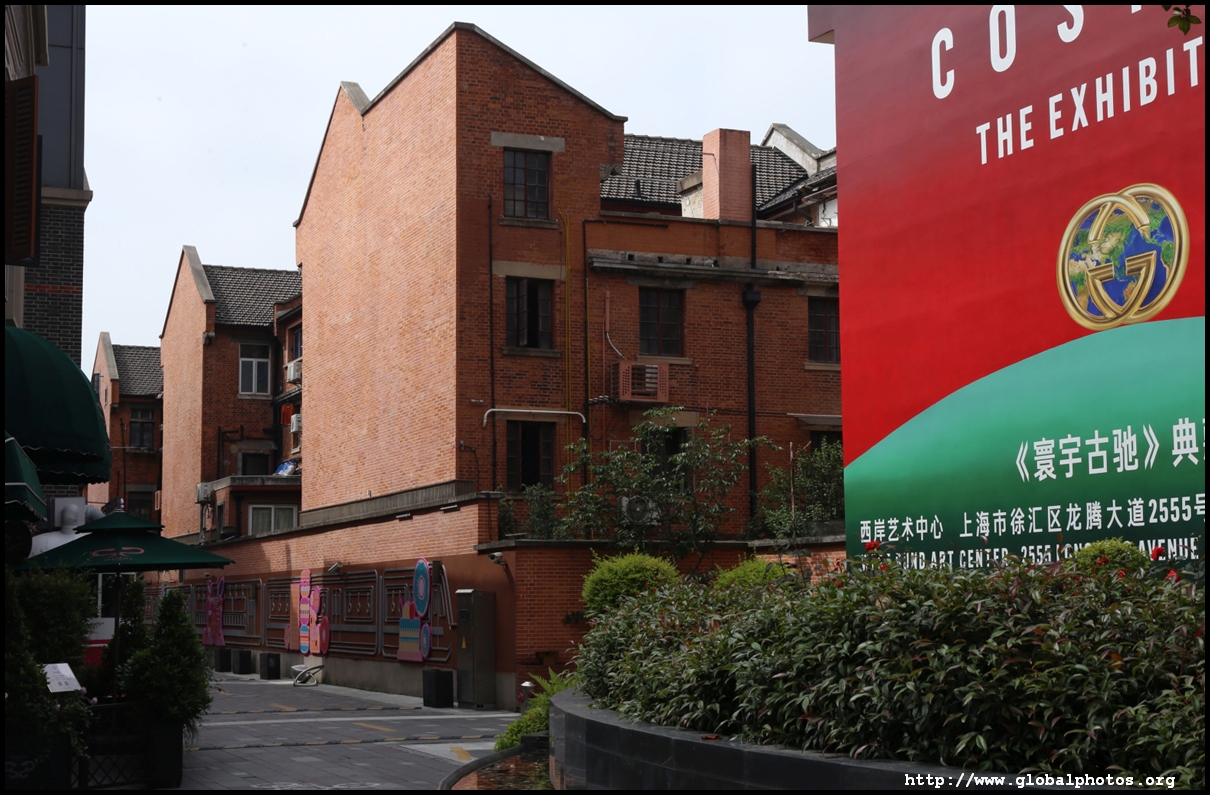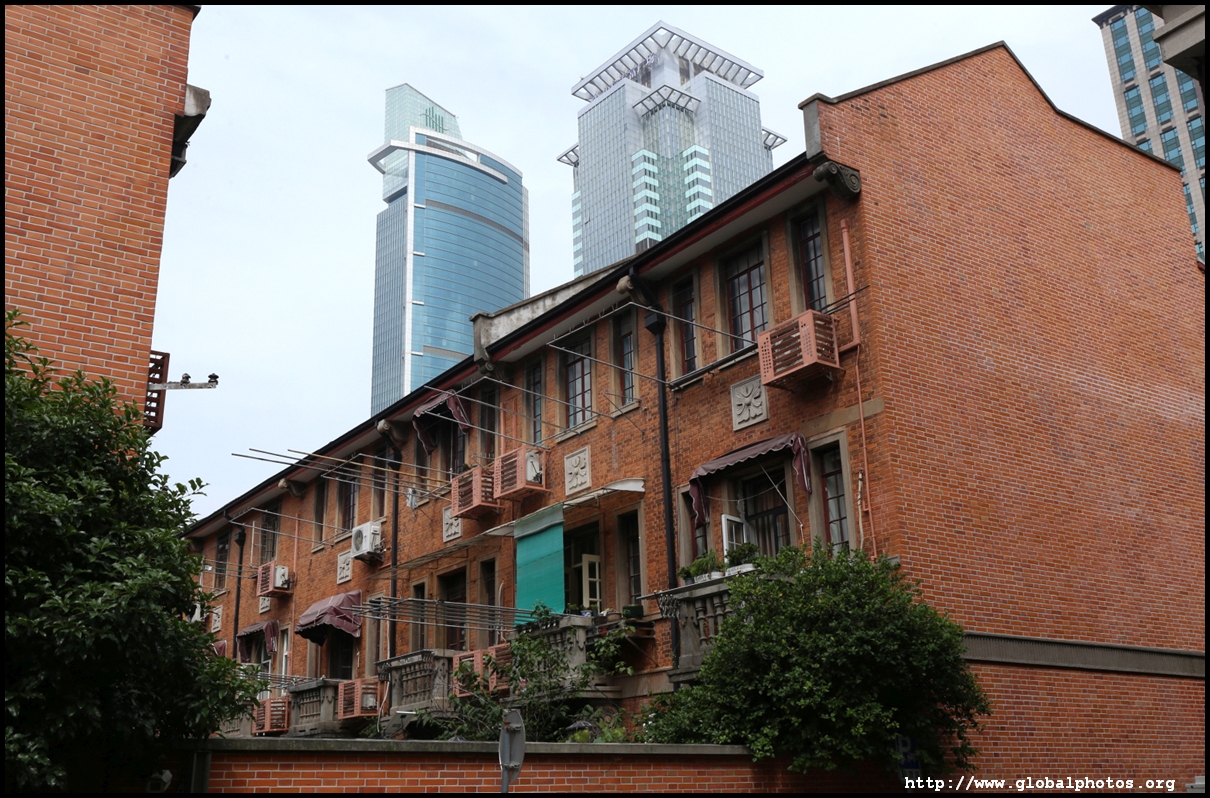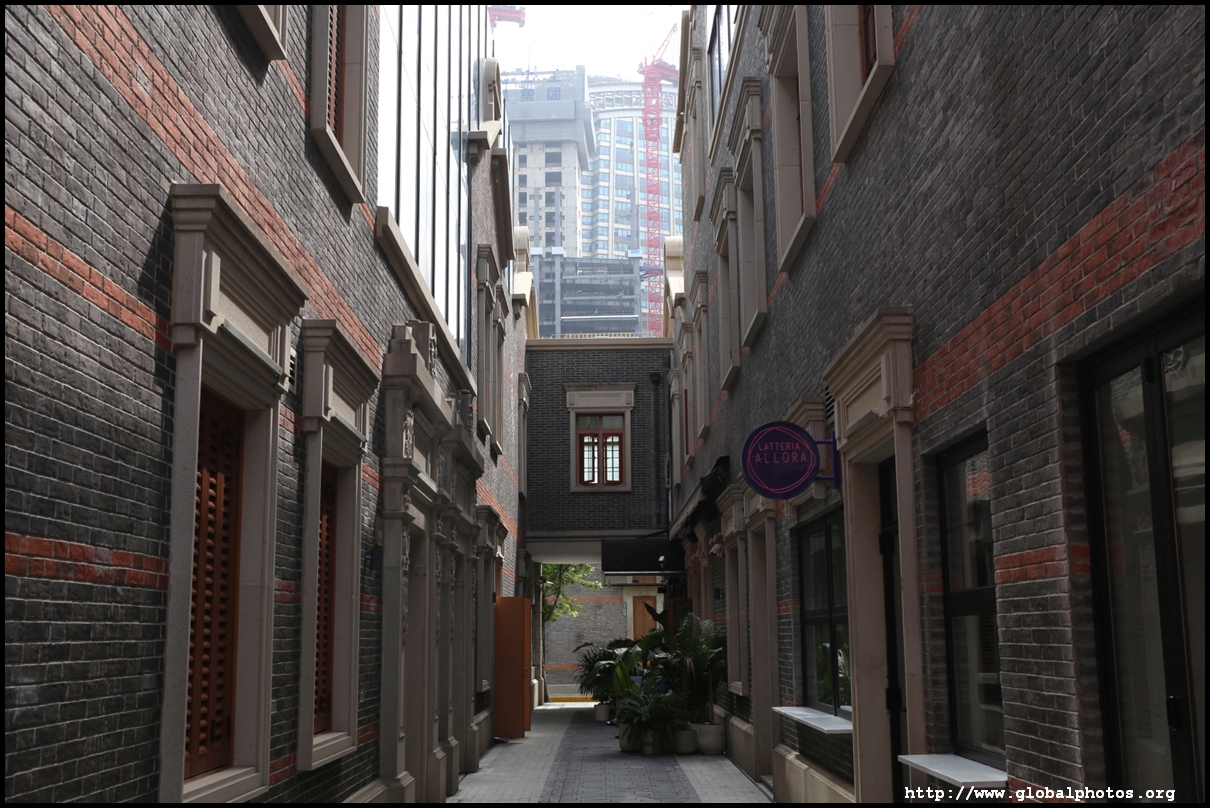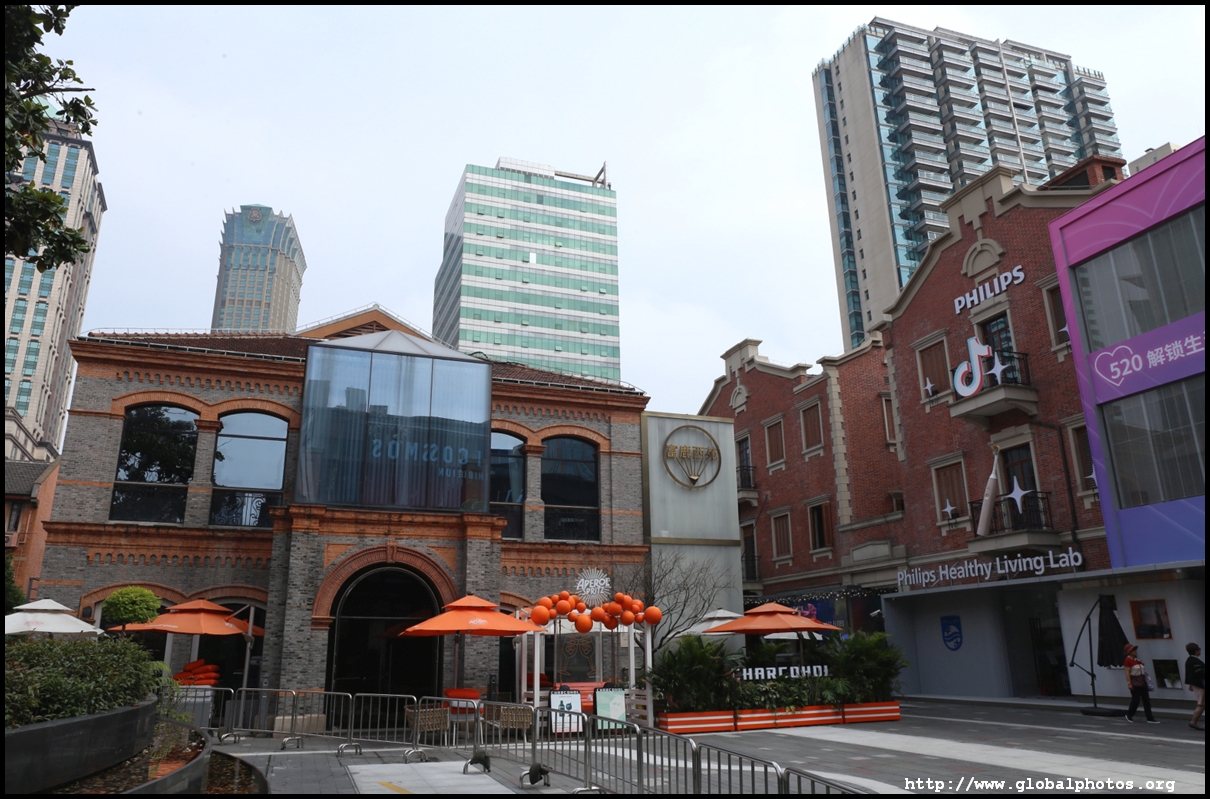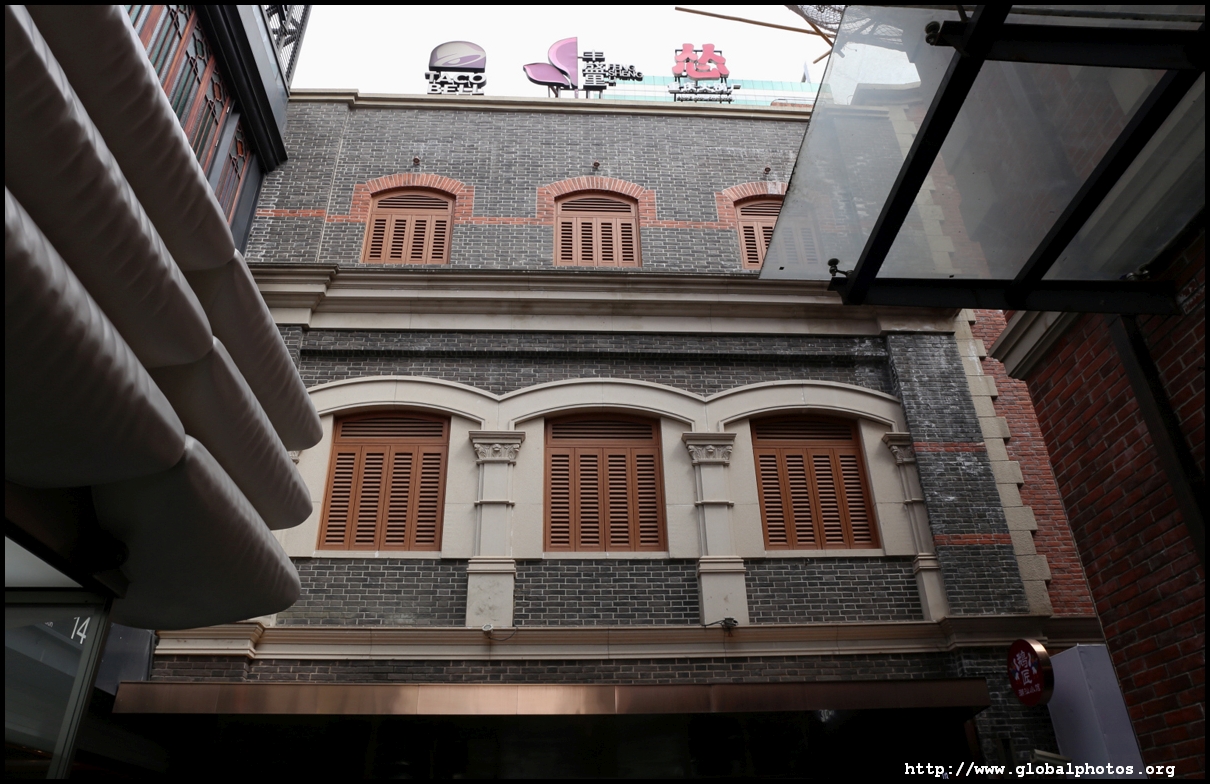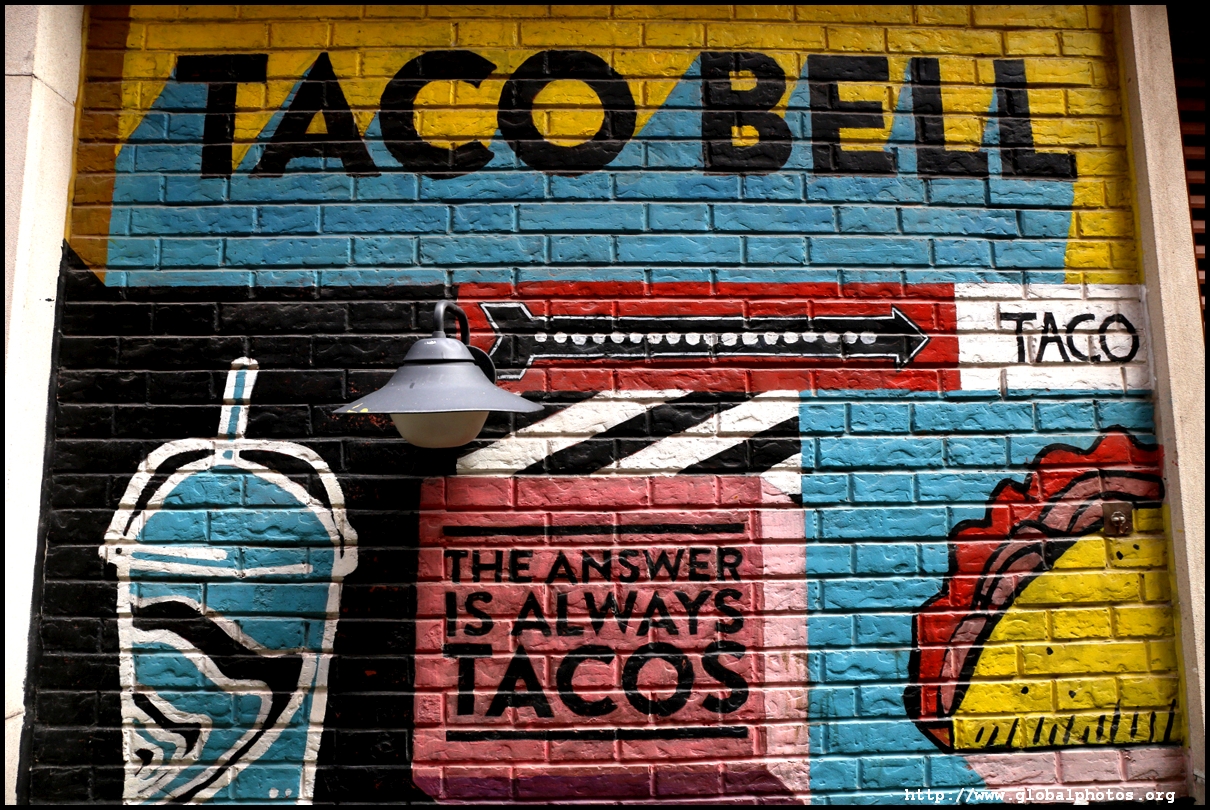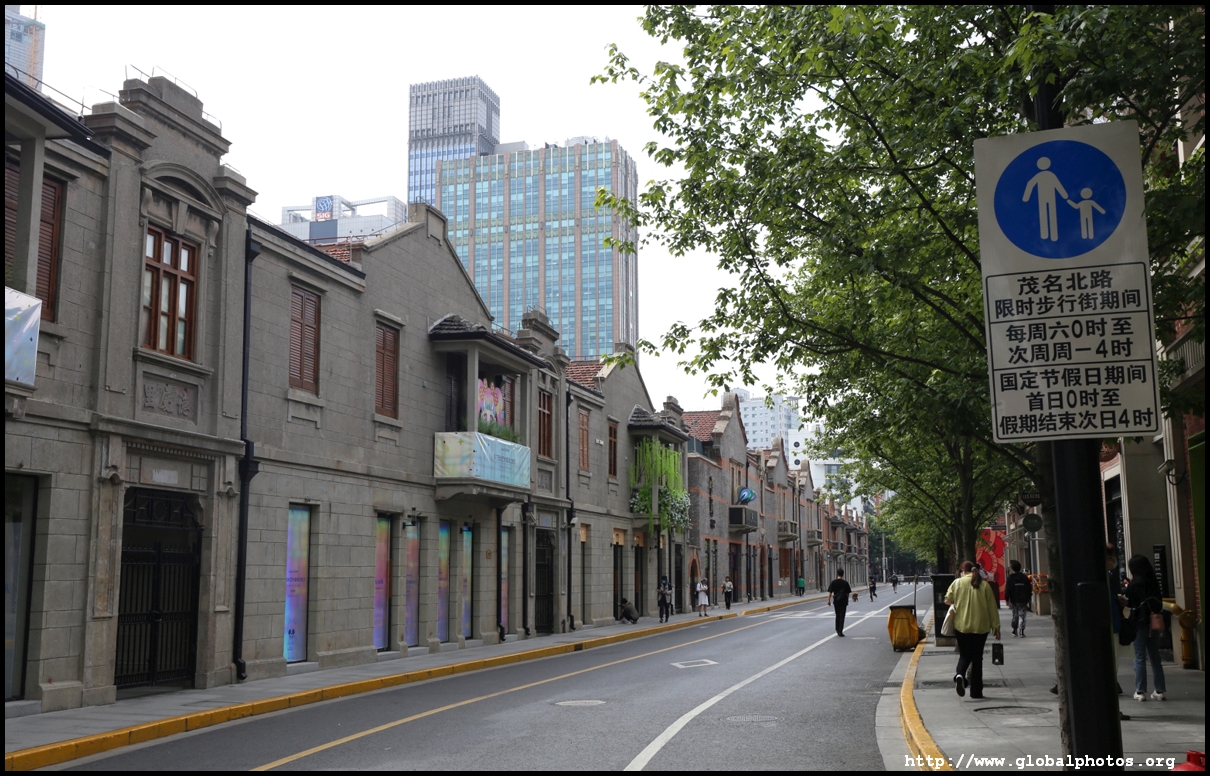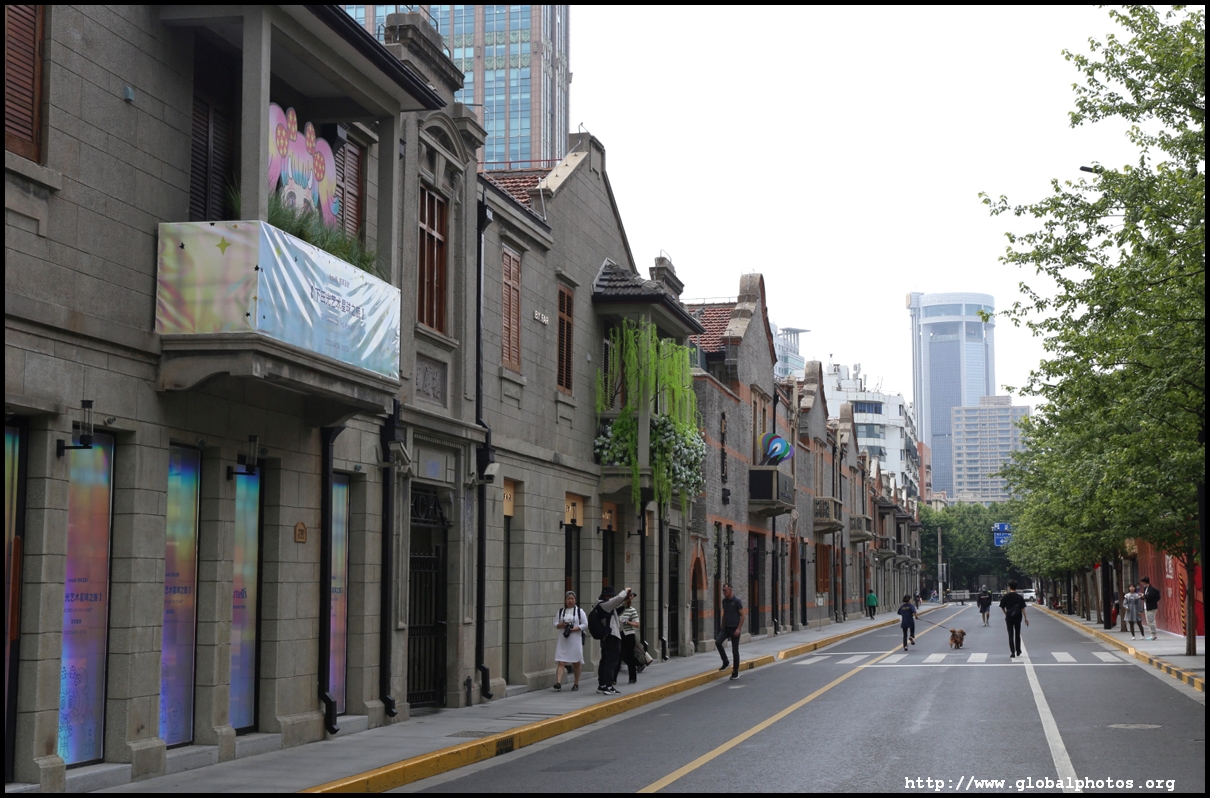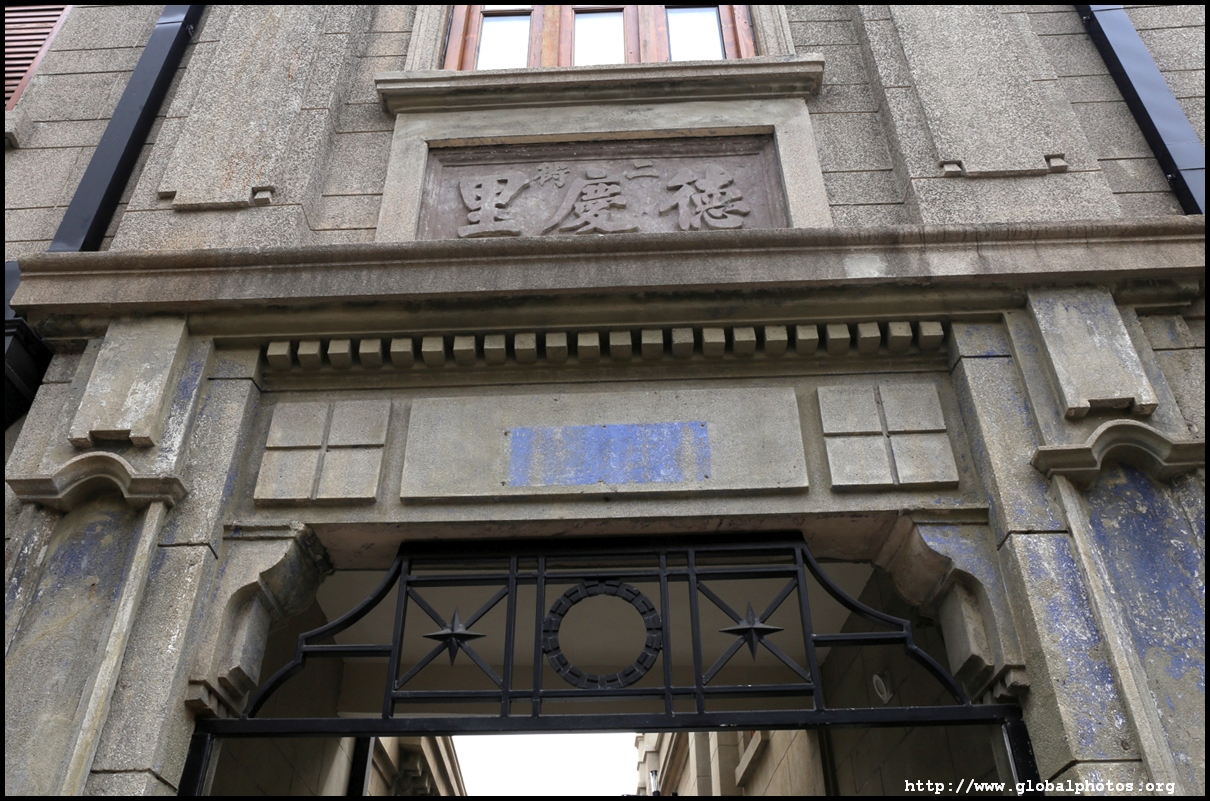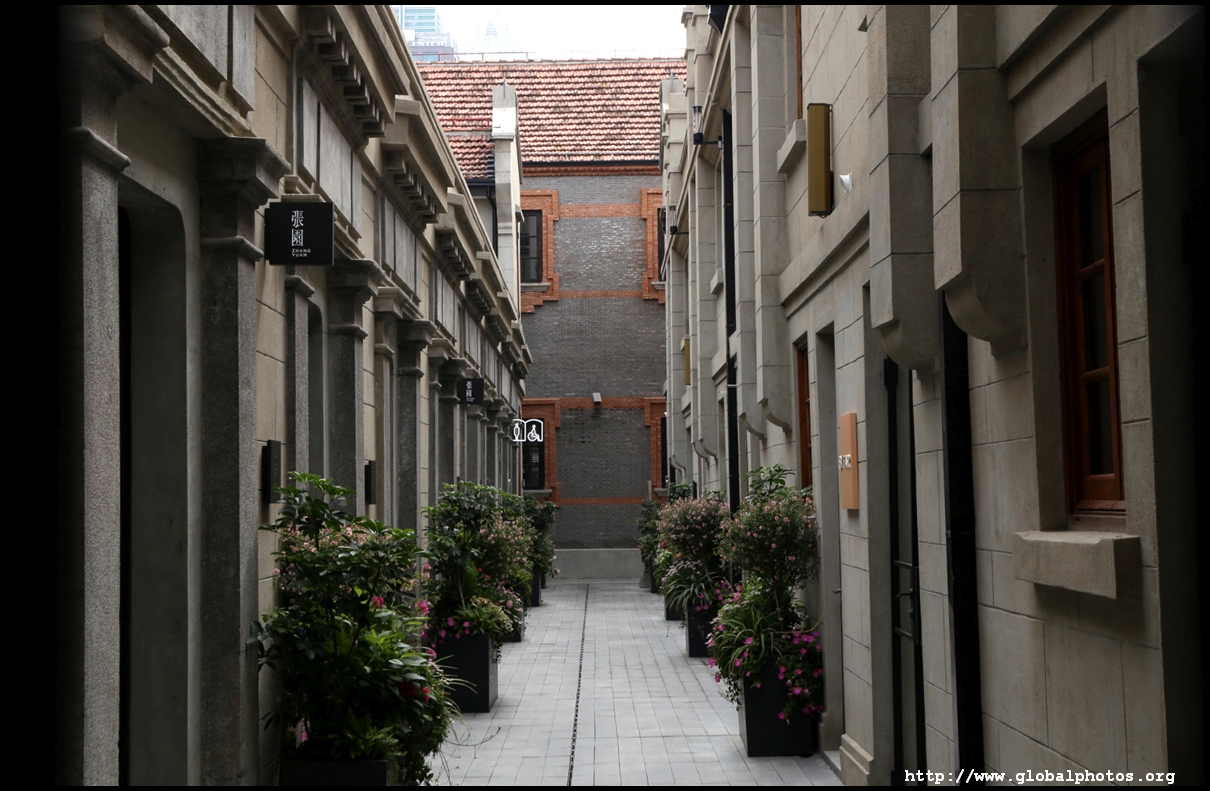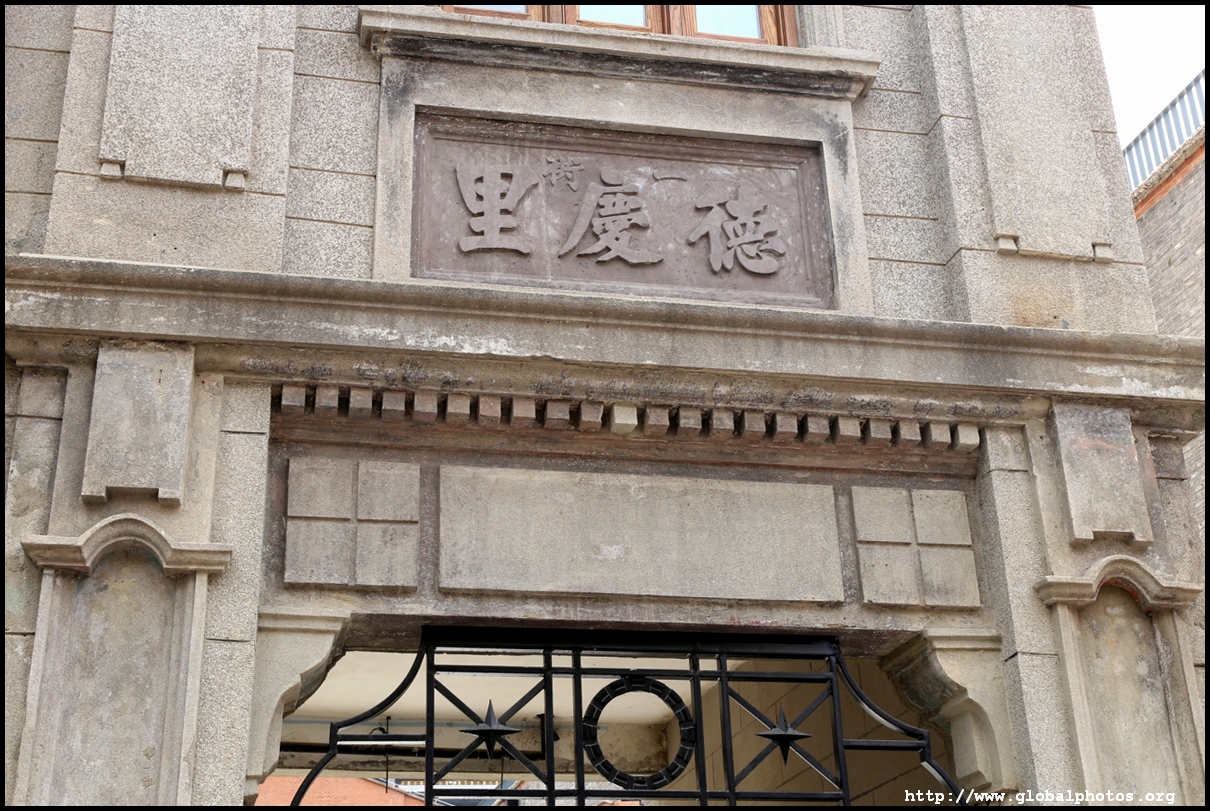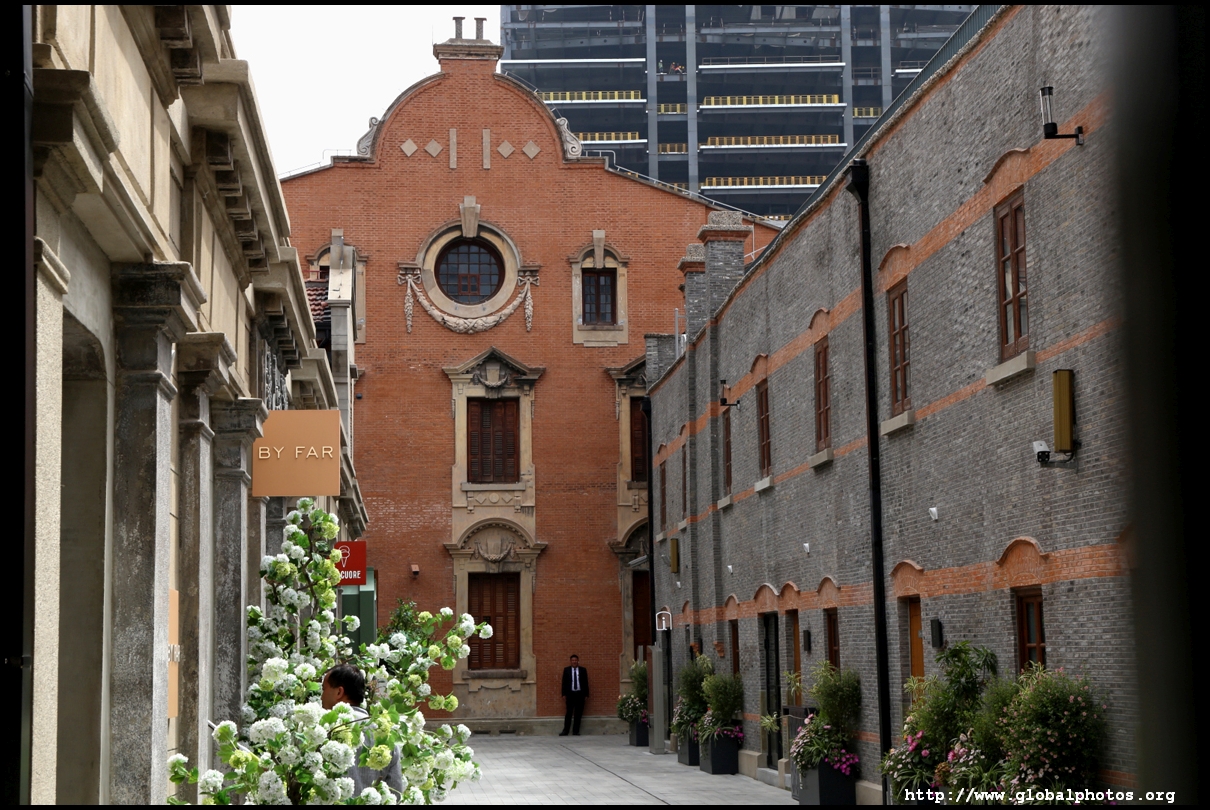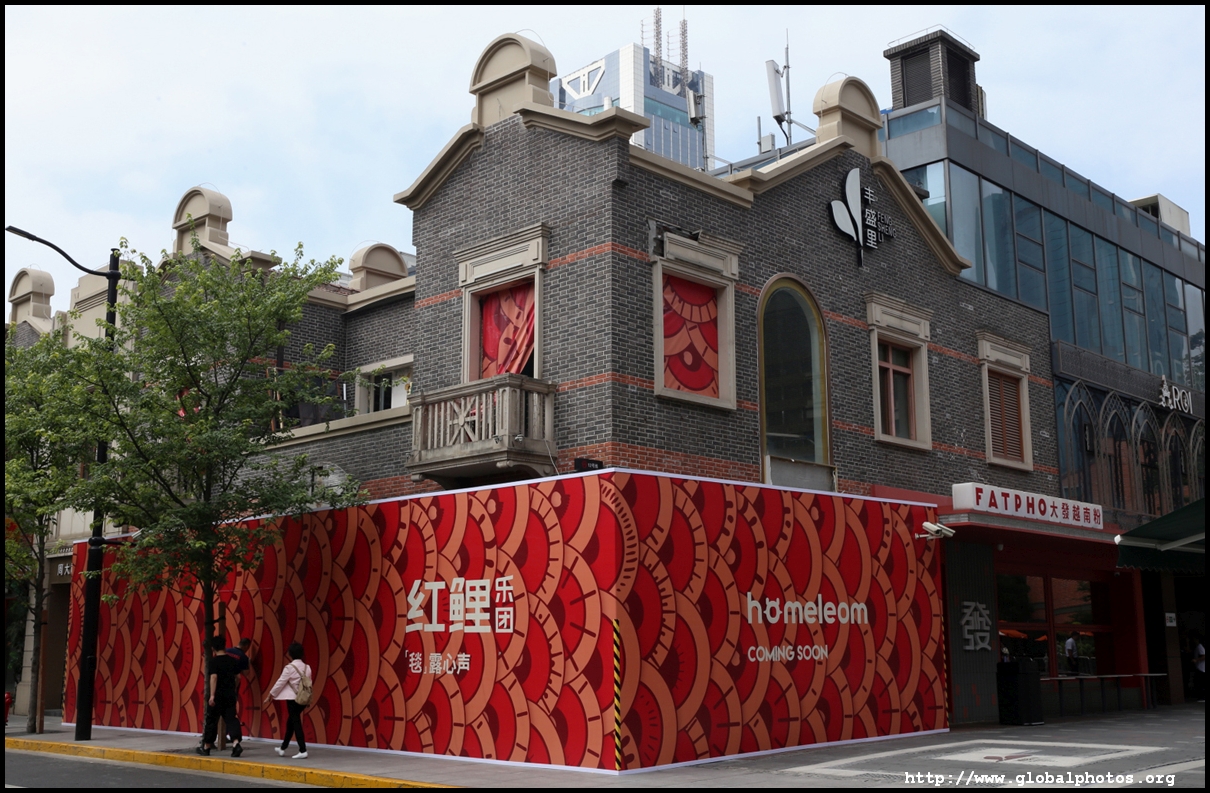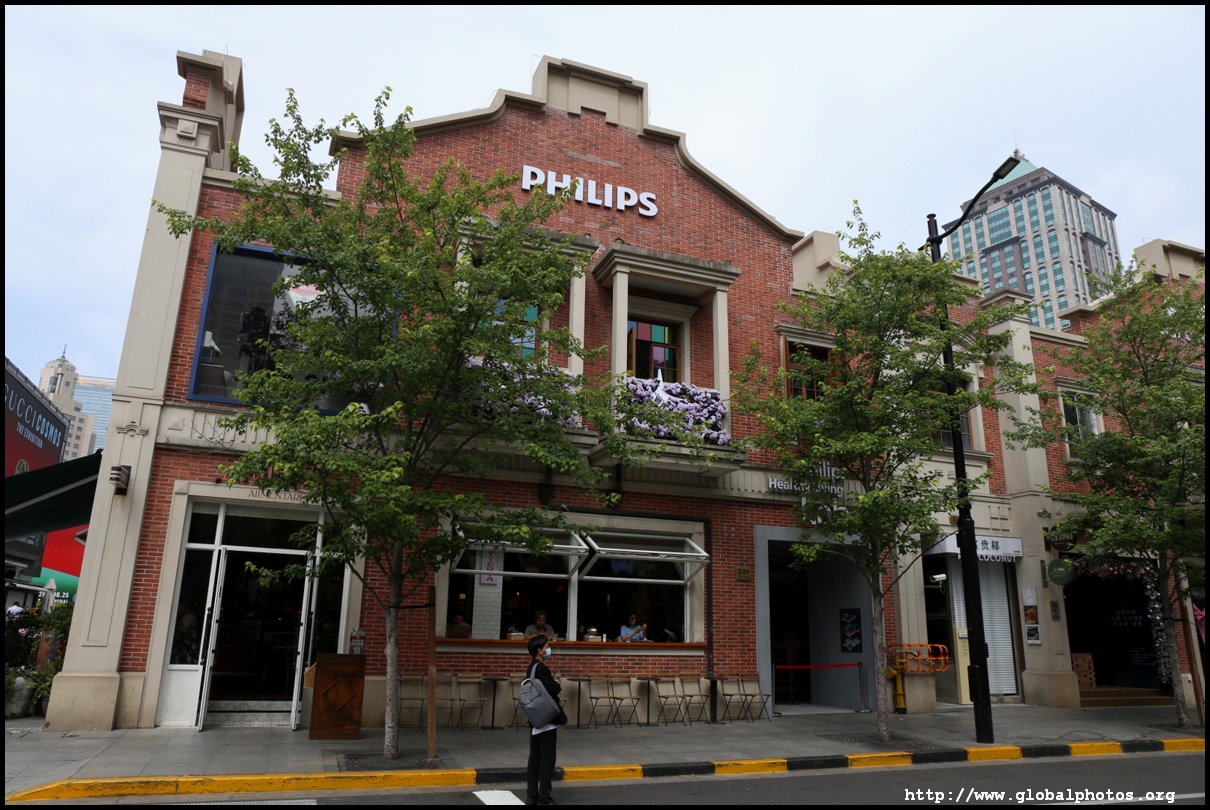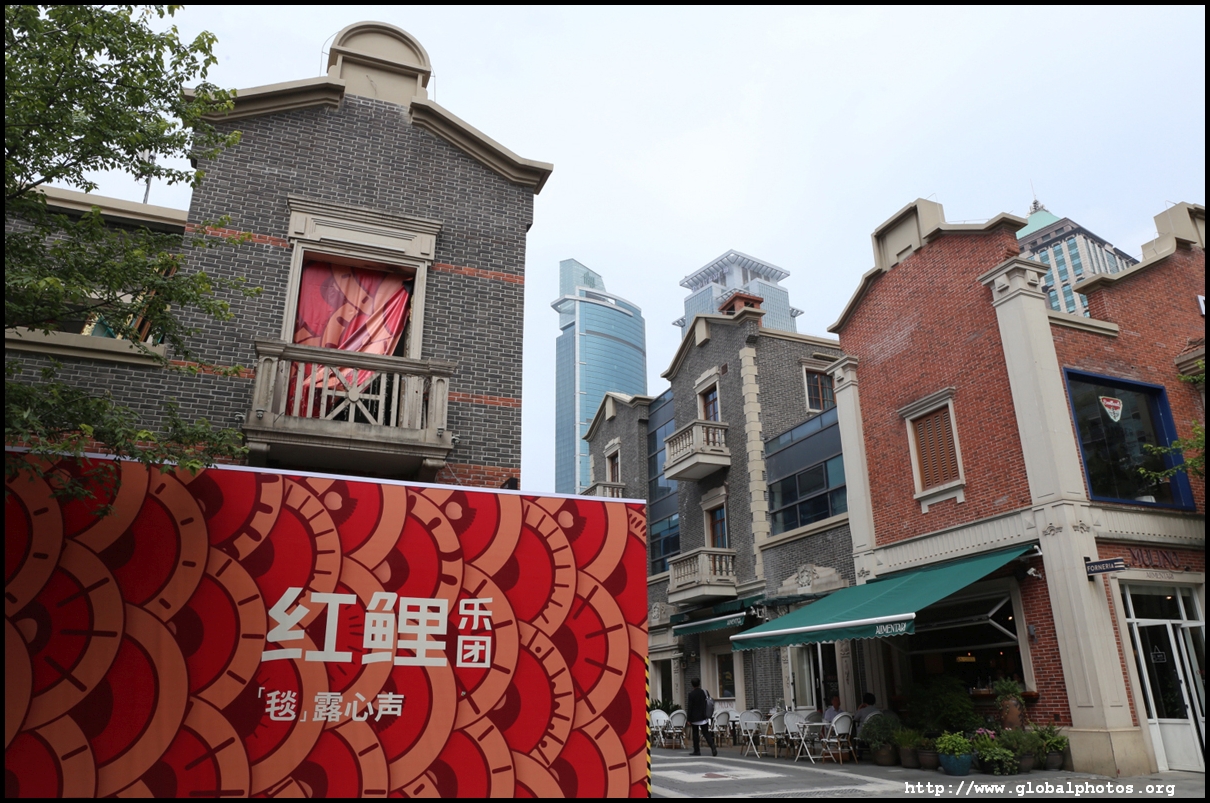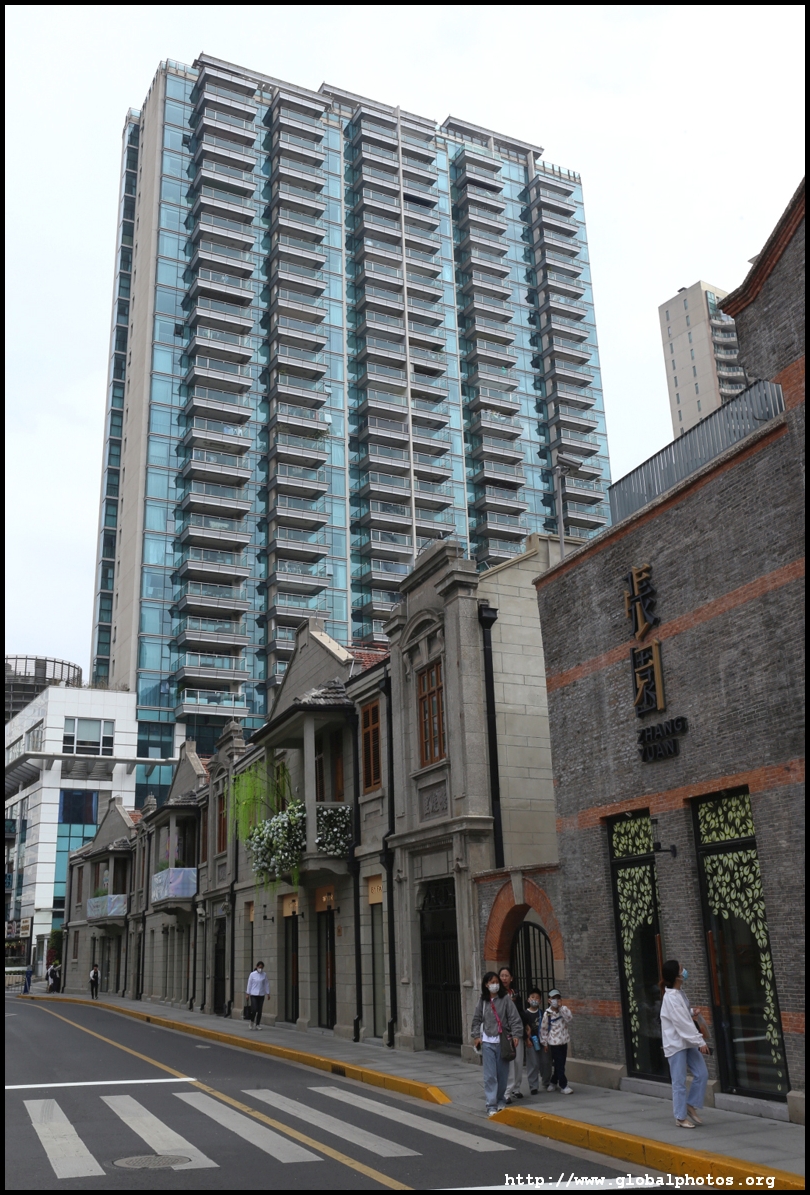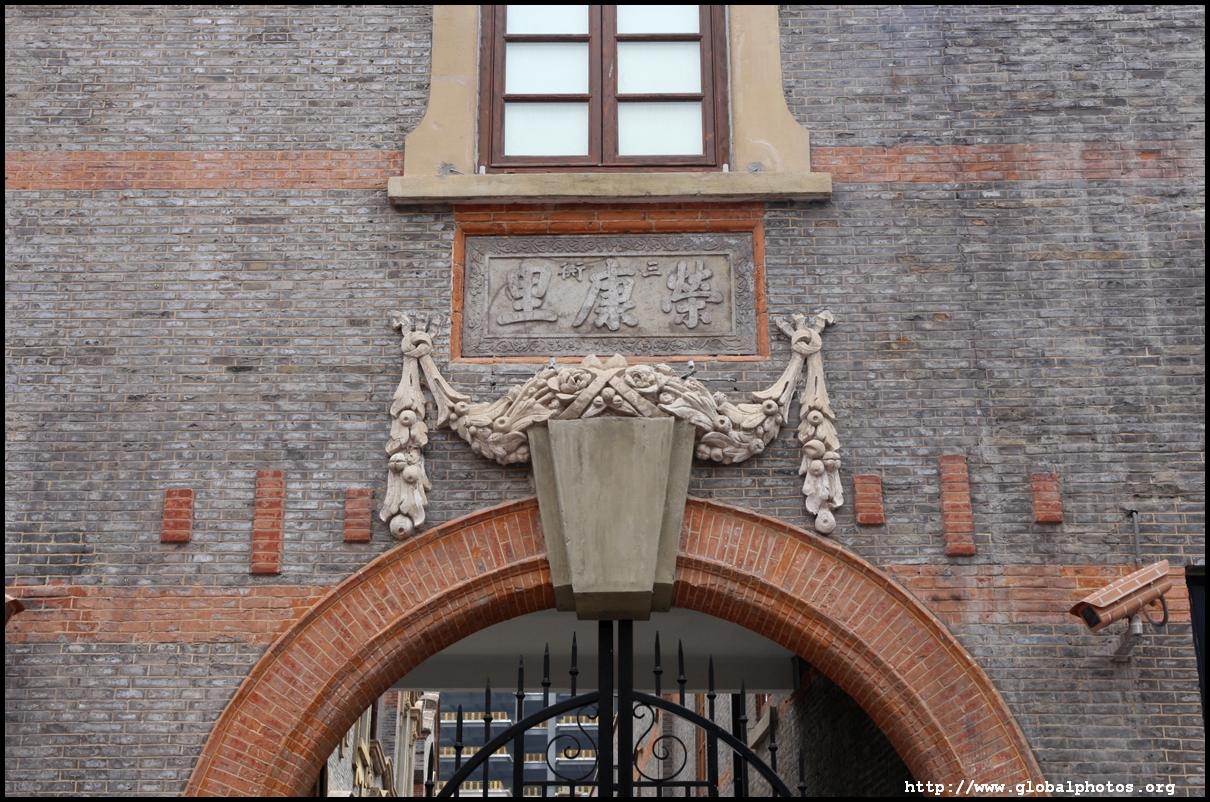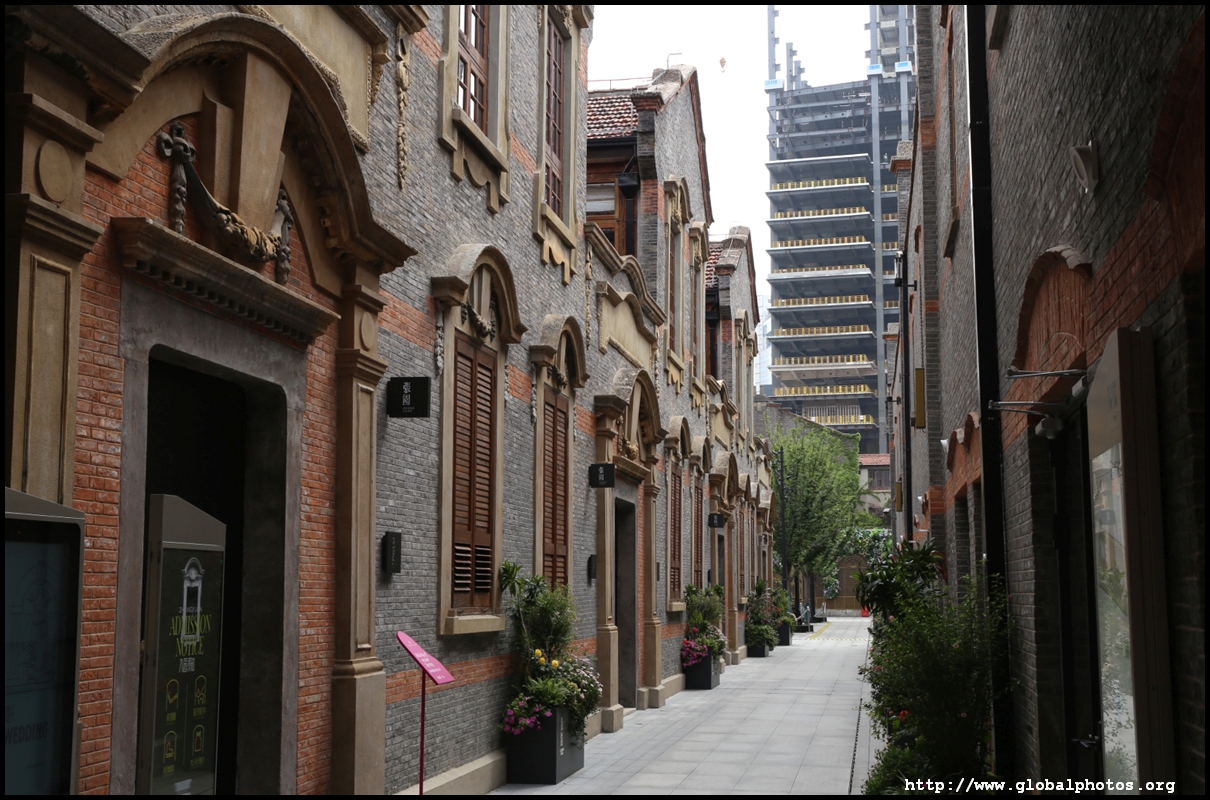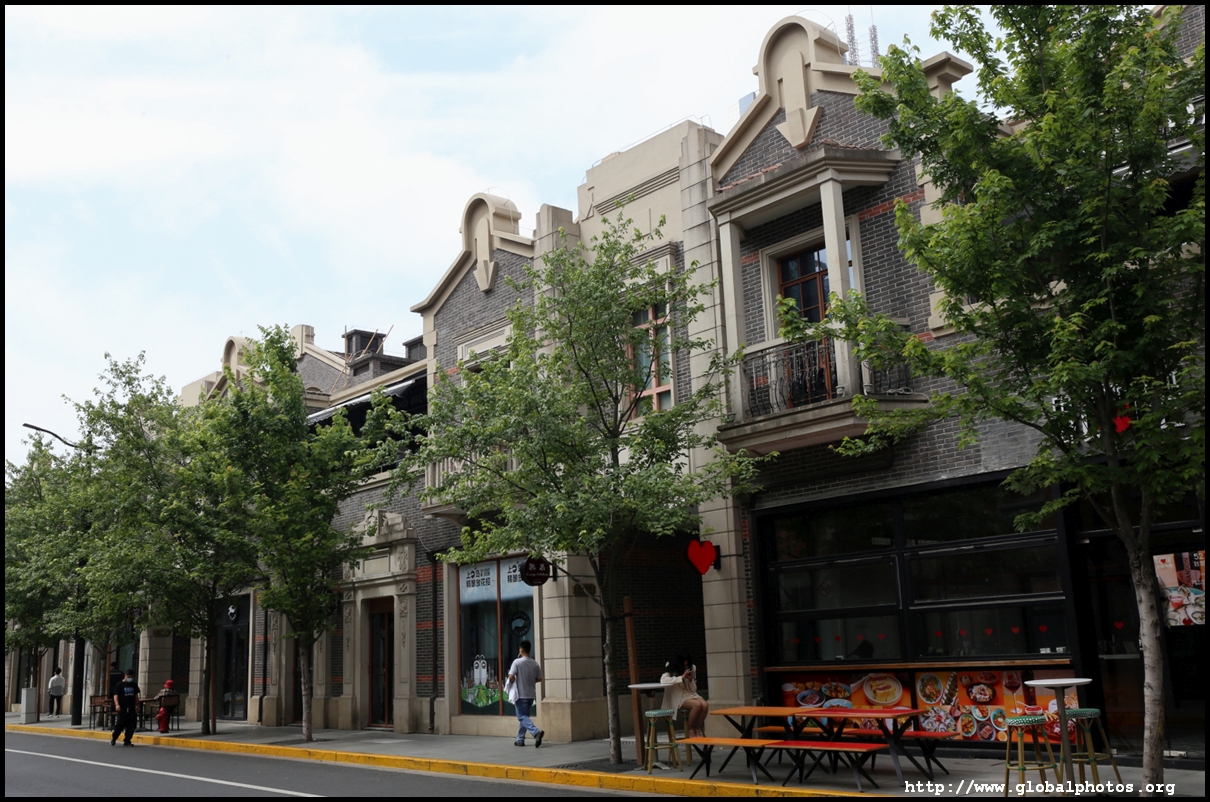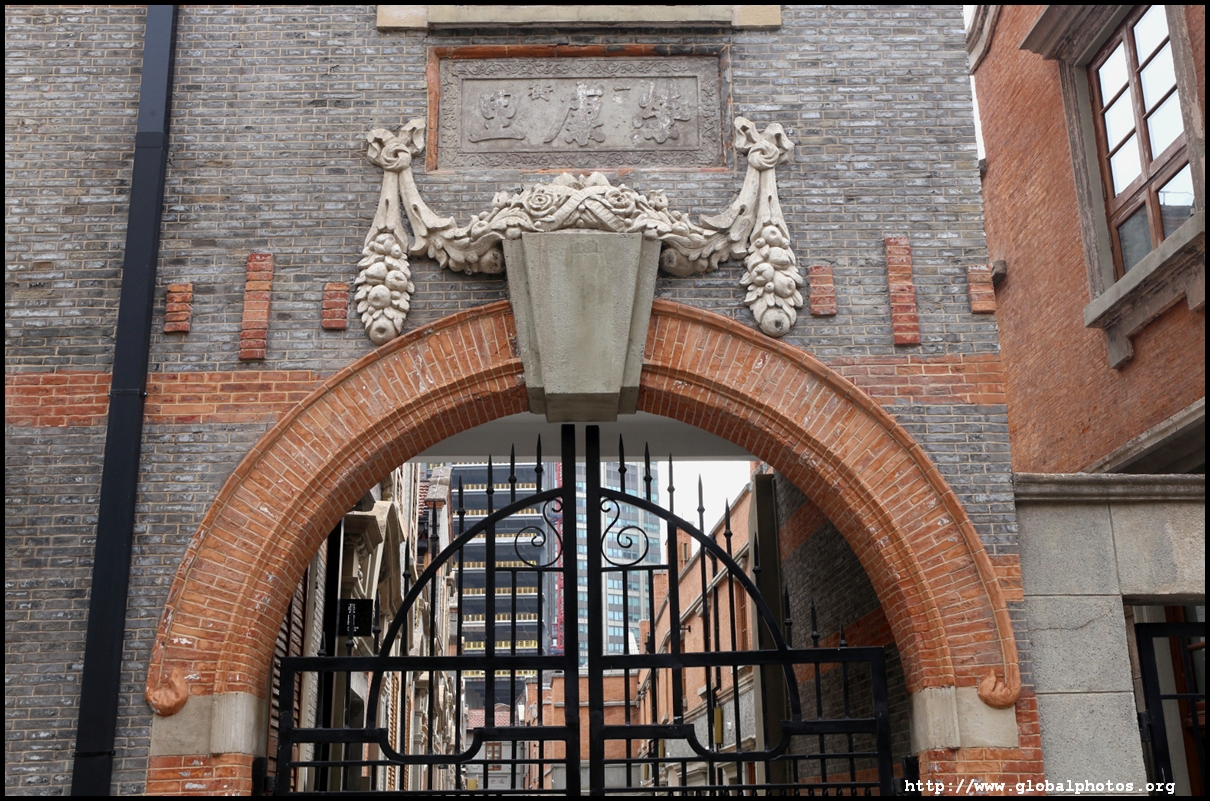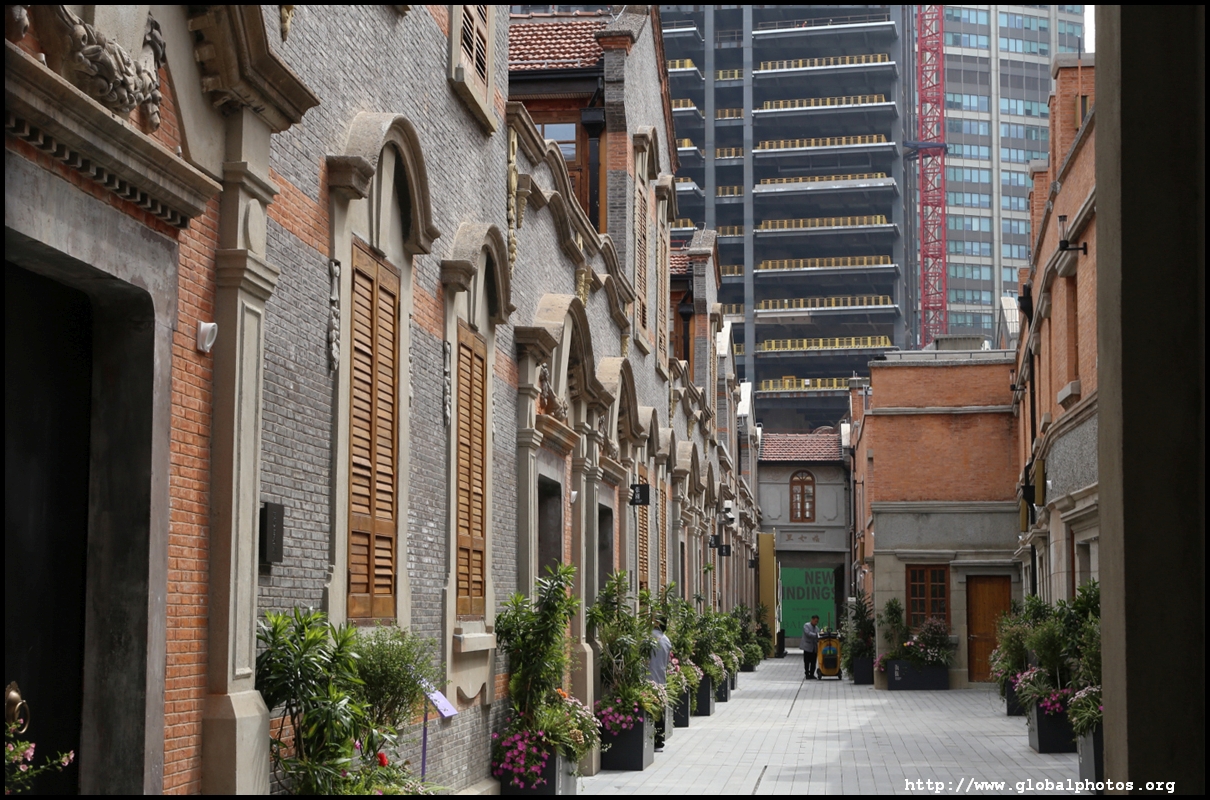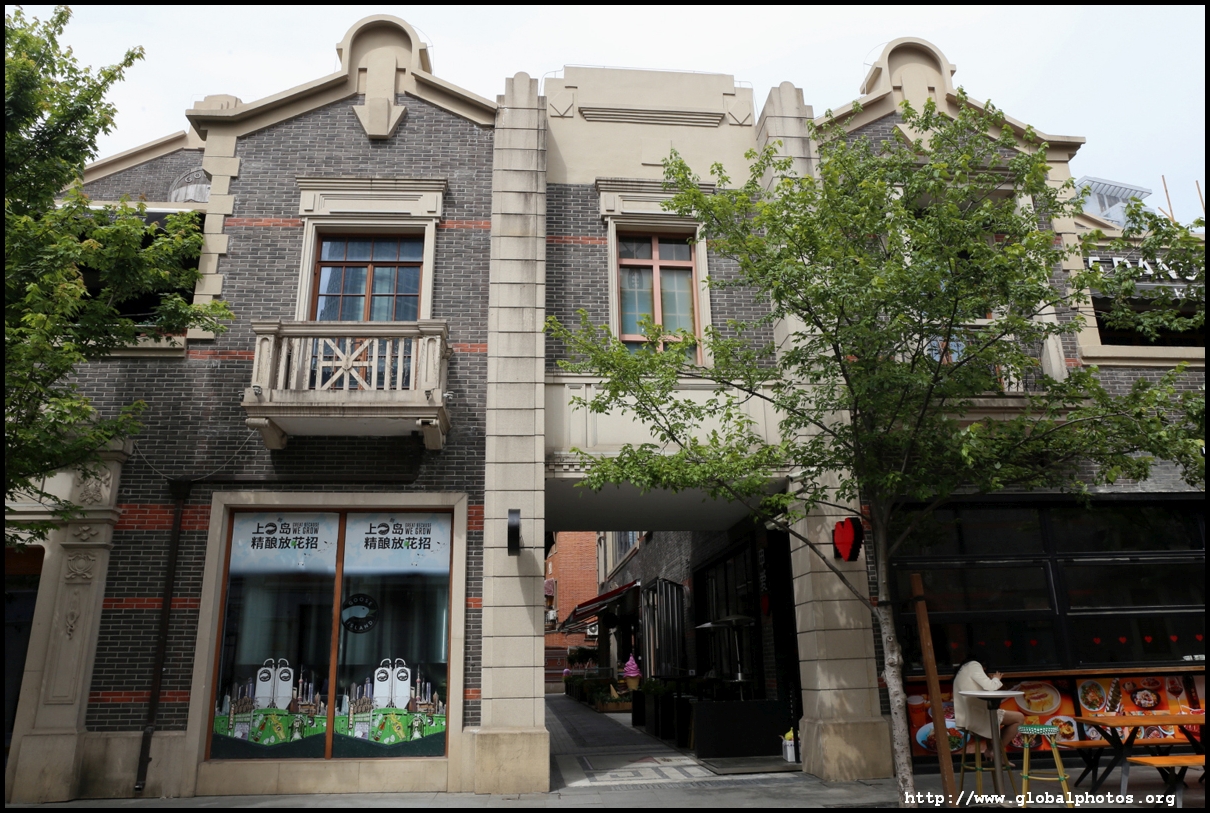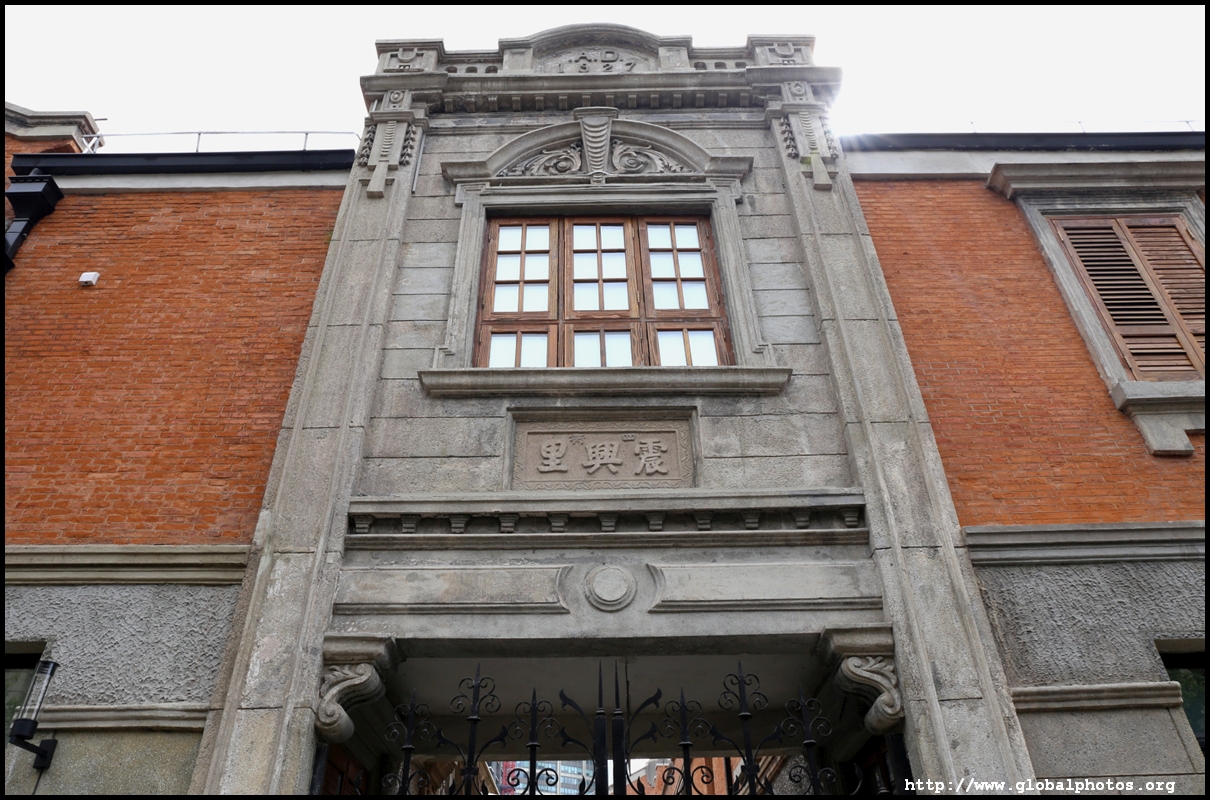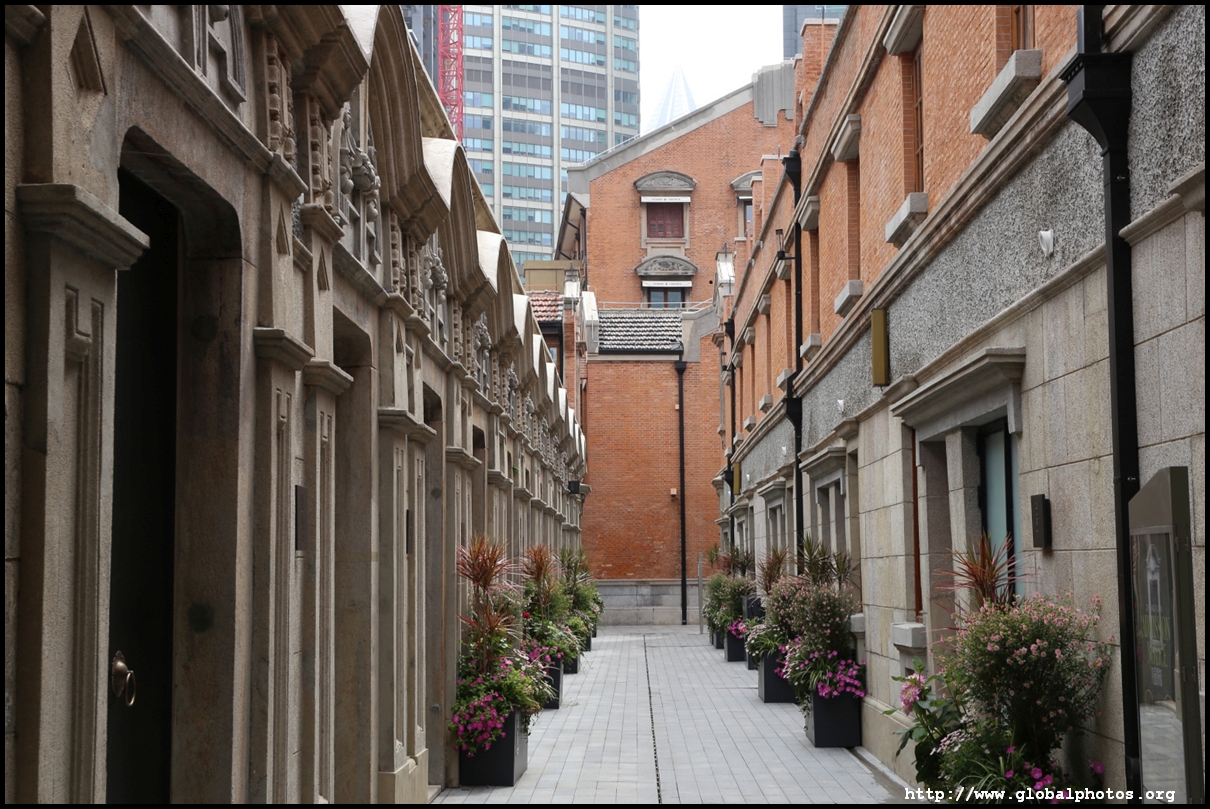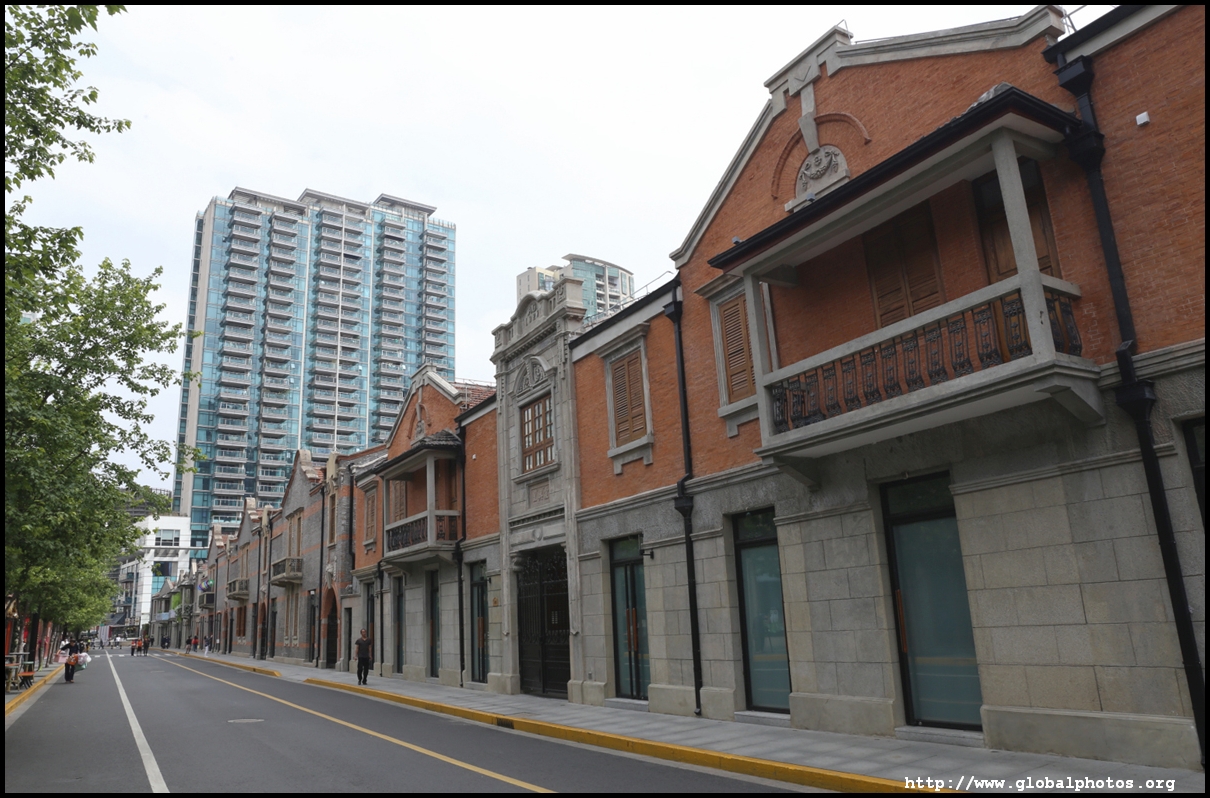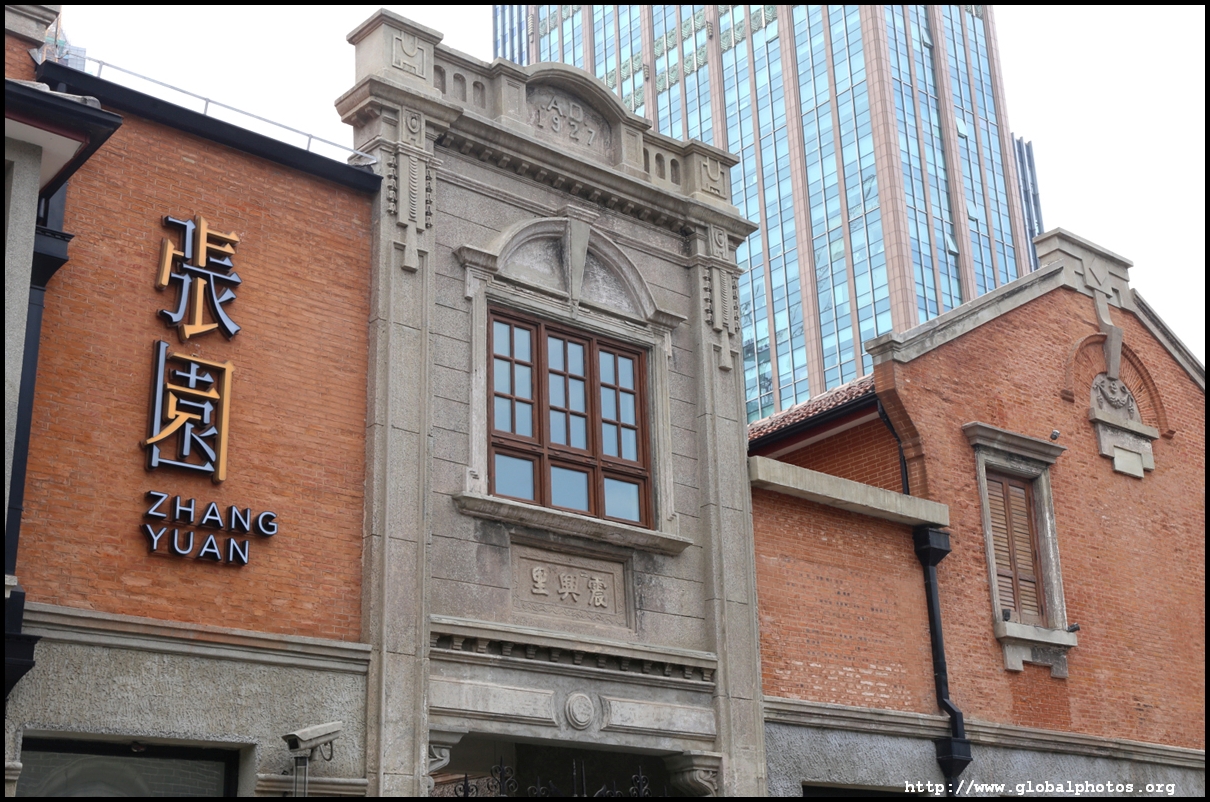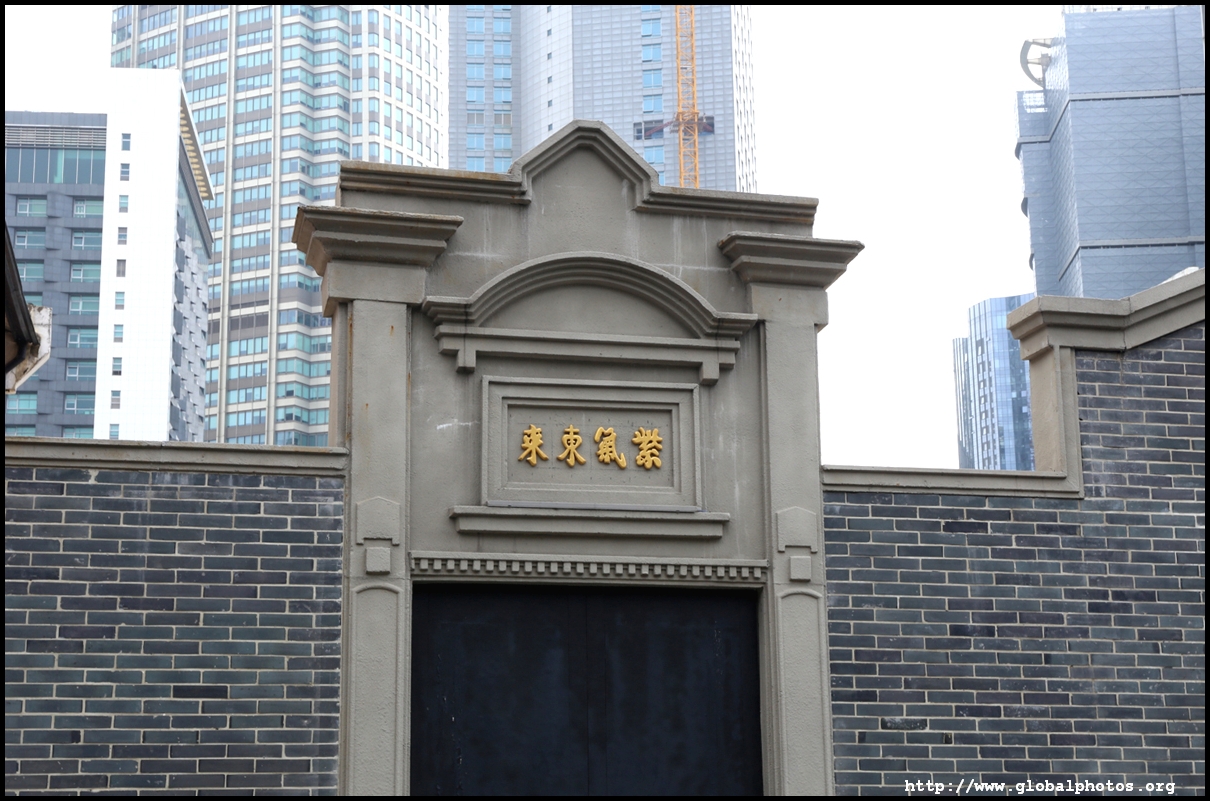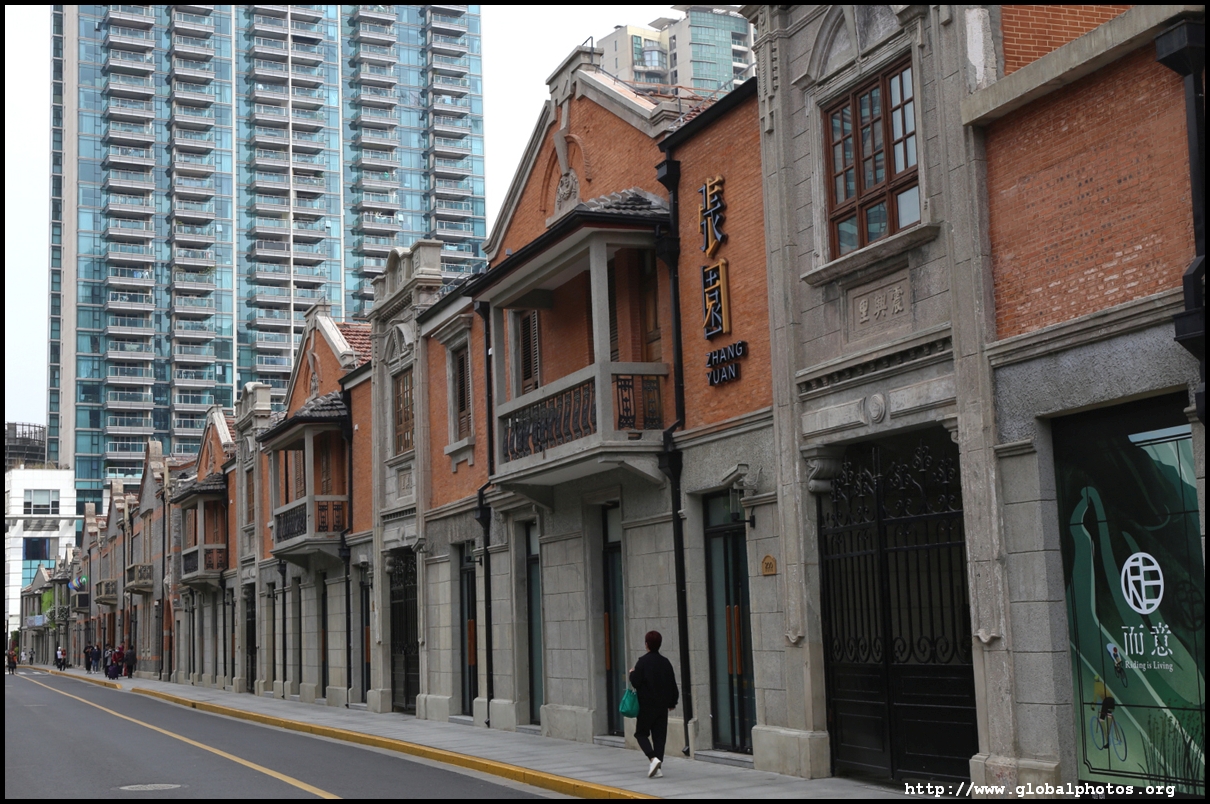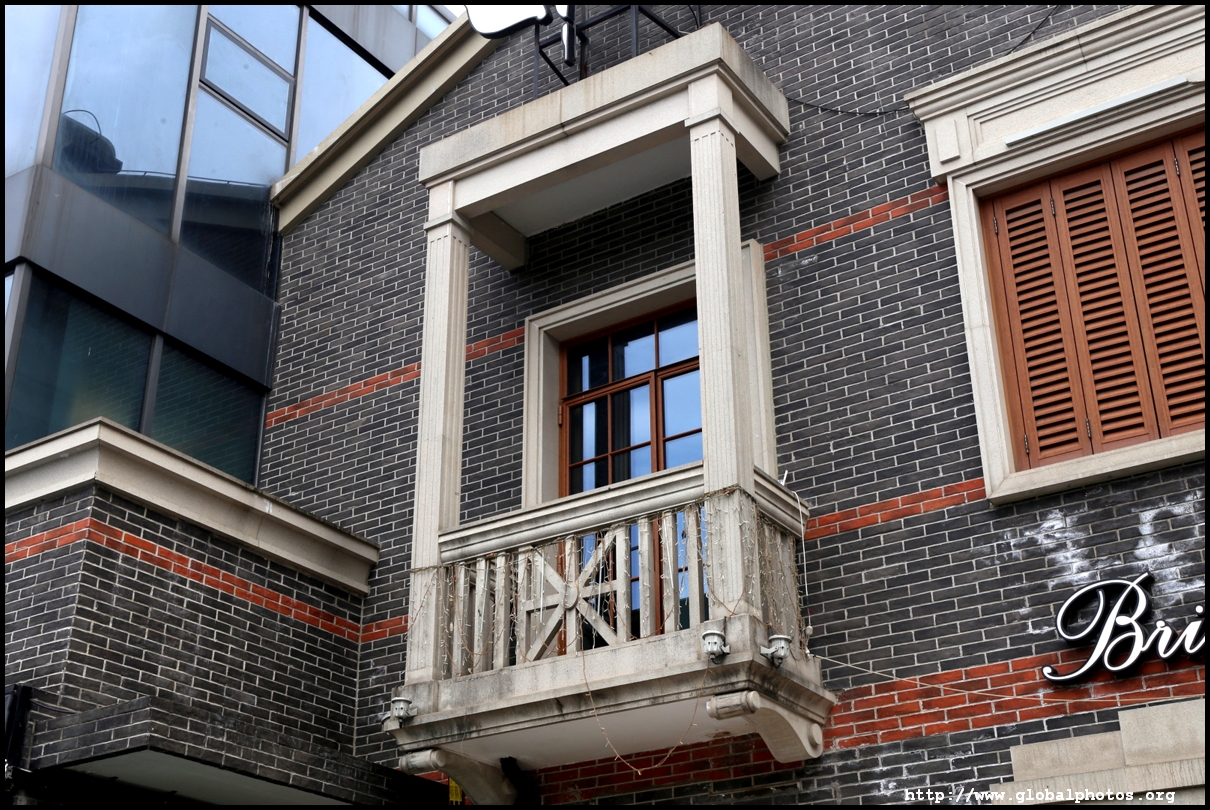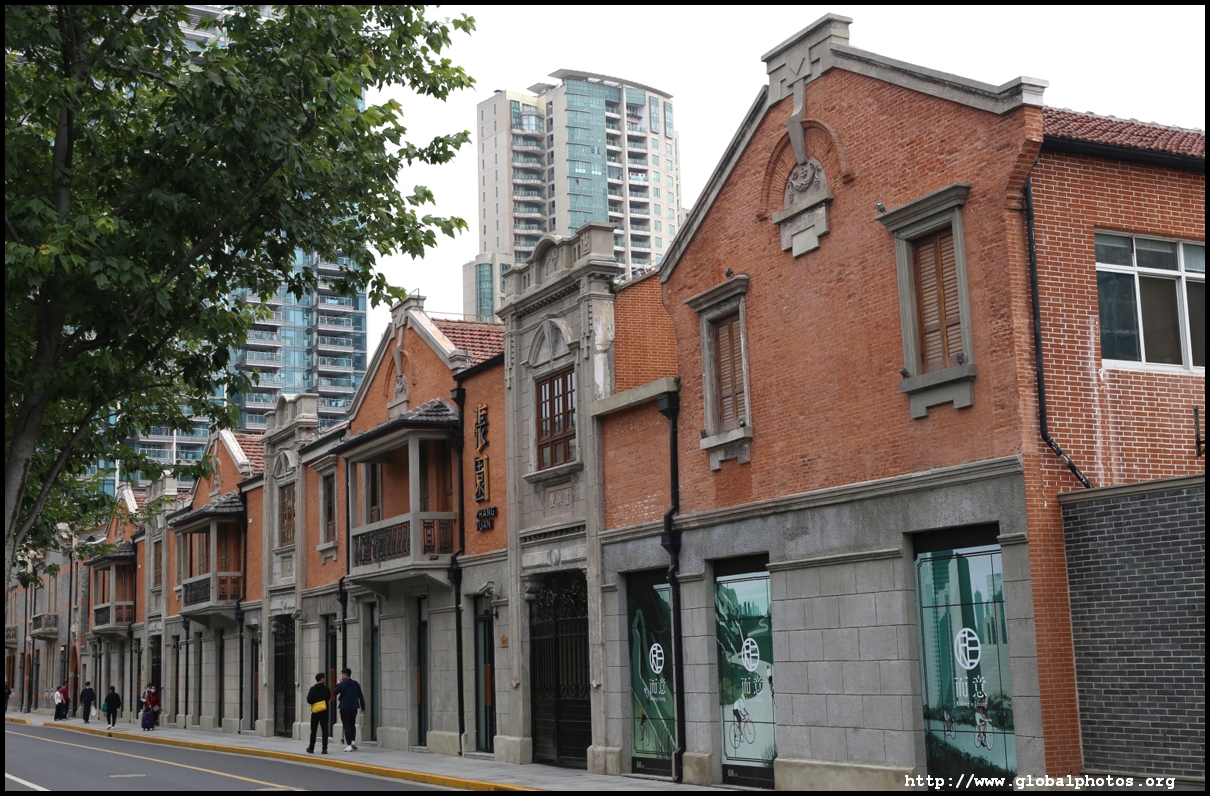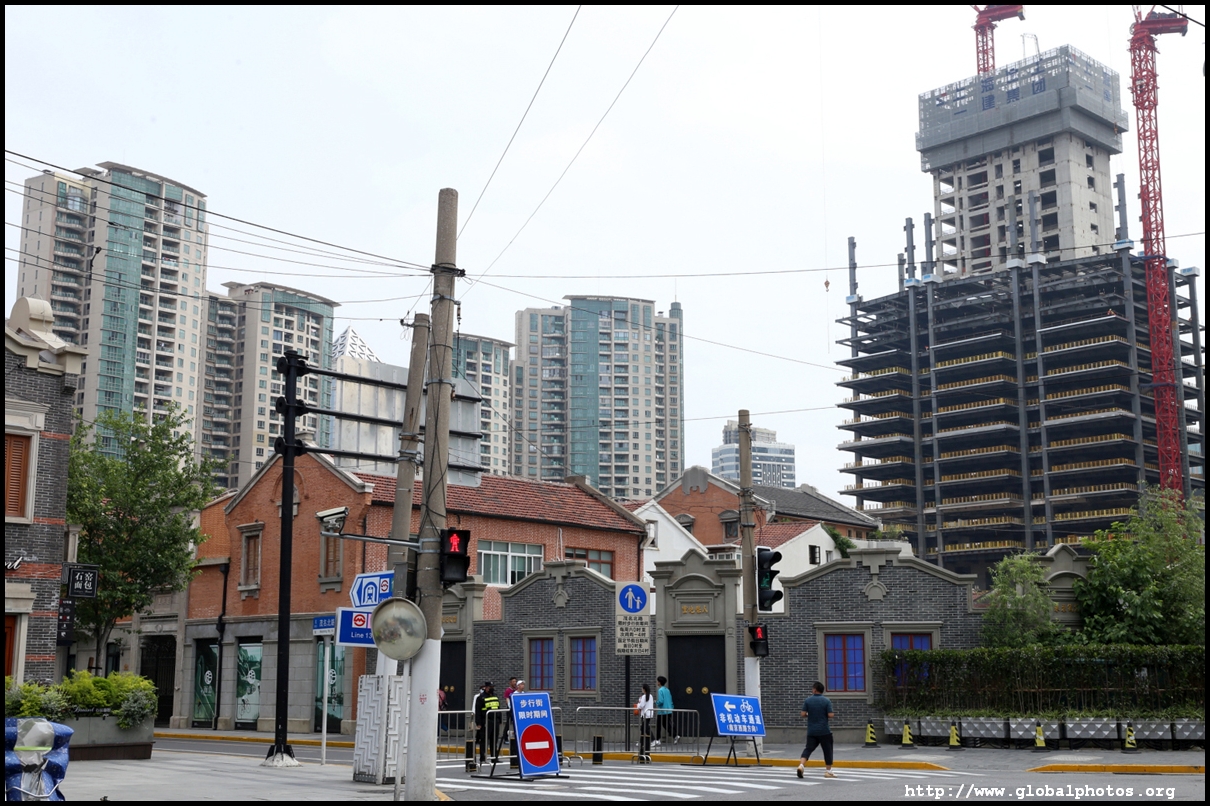Shanghai Photo Gallery - Zhangyuan

Shikumen, meaning stone gate houses, first appeared in the 1870s. They were modeled after traditional Chinese courtyard homes and became the popular housing architectural style by the turn of the 20th century. These are gated communities where all the action happened at street level within the alleys.Zhangyuan was named after Zhang Shuhe, a wealthy grains shipper from Wuxi who bought a piece of farmland here in 1882 from a British merchant, Francis Groom. He built a Western-style garden for his mother. After she passed away in 1885, the garden was opened to the public, and saw a number of firsts, including the first lit electric lamp in the country, the first bicycle race, and first outdoor photo booth. It turned into an arts and culture hub for the city. The park closed in 1918 and developers started building residences here and construction continued past the Communist revolution in 1949. It became a huge shikumen zone with blocks of 3-storey buildings. The last residents left in late 2020 as redevelopment loomed. Swire Properties from Hong Kong was brought in to preserve and regenerate the neighbourhood. Unlike other redevelopment projects that razed old Shanghai, this one retained the historic buildings and repurposed them into new uses. The first phase opened in late 2022 and the entire project is expected to finish by 2026.
The area immediately west of this new commercial district is still traditional shikumen residences, although blocked off by a huge wall so the houses can retain their privacy.
More readings : China Daily & South China Morning Post & New York Times |
|||
Back to the Shanghai Gallery Main Page
